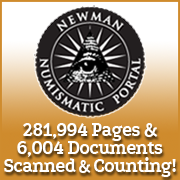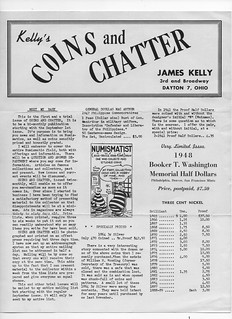
About UsThe Numismatic Bibliomania Society is a non-profit organization devoted to the study and enjoyment of numismatic literature. For more information please see our web site at coinbooks.org SubscriptionsThose wishing to become new E-Sylum subscribers (or wishing to Unsubscribe) can go to the following web page link MembershipThere is a membership application available on the web site Membership Application To join, print the application and return it with your check to the address printed on the application. Membership is only $20 to addresses in the U.S., $25 for First Class mail, and $30 elsewhere. For those without web access, write to: Terry White, Treasurer
AsylumFor Asylum mailing address changes and other membership questions, contact Terry at this email address: terrywhite5475@yahoo.com SubmissionsTo submit items for publication in The E-Sylum, just Reply to this message, or write to the Editor at this address: whomren@gmail.com BUY THE BOOK BEFORE THE COIN |
- WAYNE'S WORDS: THE E-SYLUM JUNE 12, 2016
- MORE SELECTIONS FROM Kolbe & Fanning’S SALE #142
- SIATRAS INTERNATIONAL BOOKSHOP SUMMER 2016 SALES
- NEW BOOK: ENCYCLOPEDIA OF OBSOLETE PAPER MONEY, VOL. 7
- NEW BOOK: 2017 STANDARD CATALOG OF WORLD COINS, 1901-2000
- RED BOOK RECOLLECTIONS: RICHARD SCHWARY
- WALTER PERSCHKE 1939-2016
- THE NEWMAN PORTAL SCANS THE CALCOIN NEWS
- NCCA MONOGRAPH #3: LIBERTY SEATED COINAGE
- NOTES FROM E-SYLUM READERS: JUNE 12, 2016
- NINETEENTH CENTURY U.S. MINT PROOF DIE TERMS
- DAVIDGE GAMBRILL (1836-1905)
- MORE ON CARLING GRESHAM
- MORE ON HALL OF FAME FOR GREAT AMERICANS MEDALS
- ANA SUMMER SEMINAR COURSE ON MEDALS
- MEDAL COLLECTORS OF AMERICA 2016 MEETING
- 1970-S QUARTER STRUCK ON 1941 CANADA QUARTER
- CLANDESTINE STRIKE: 1970-S PROOF QUARTER ERROR
- 1942 EXPERIMENTAL CENT OFFERED
- LYN KNIGHT JUNE 2016 AUCTION SALE HIGHLIGHTS
- FIND IN ISRAEL MAY INCLUDE EARLY COIN COLLECTION
- THE TYNEMOUTH EXTENSION MEDAL
- THE NEW ZEALAND GALLANTRY STAR MEDAL
- THE FIRST VICTORIA CROSS AWARDED TO A MUSLIM
- HARPERS FERRY QUARTER LAUNCHED
- MOVIE MONEY USED IN CANTON, OHIO
- BANK OF ENGLAND UNVEILS NEW CHURCHILL NOTE
- ARTICLE PROFILES POLYMER BANKNOTE INVENTOR DAVID SOLOMON
- COLLECTORS LINE UP FOR BANK OF THAILAND COMMEMORATIVE
- SHIRE POST MINT'S FANTASY WORLD COINS
- DECORATING A ROOM WITH A BOOK TSUNAMI
- FEATURED WEB SITE: KNIGHTS OF SAINT ELIGIUS
Click here to access the complete archive
To comment or submit articles, reply to whomren@gmail.com
WAYNE'S WORDS: THE E-SYLUM JUNE 12, 2016
New subscribers this week include: William 'Trey' Todd, Daniel L Carroll and Valerie Rivera. Welcome aboard! We now have 1,981 subscribers.
This week we open with updates from Kolbe & Fanning and Demetrius Siatras and two new books. Other topics this week include The CalCoin News, Carling Gresham, medal collecting, that 1970-S quarter struck on a Canadian coin, the Tynemouth Extension Medal and the first Victoria Cross awarded to a Muslim.
To learn more about Byzantine Coins in Central Europe, Walter Perschke, M.A. Powills, Davidge Gambrill, the Harpers Ferry aurter launch ceremony, the Bank of England's launch of the new Churchill banknote, Hydrogen Embrittlement, Pitting Corrosion, the Knights of St. Eligius and the Iron Coin of the Faceless Man, read on. Have a great week, everyone!
Wayne Homren
Editor, The E-Sylum
MORE SELECTIONS FROM Kolbe & Fanning’S SALE #142
Kolbe & Fanning’s 142nd sale of numismatic literature will be held on June 24 and 25, and bids have been coming in at a good rate. The two-part sale features works on ancient, medieval and modern coins from around the world and aims to have something for everyone.
The sale is arranged in two parts. The first, featuring 380 lots, will be conducted as a live online sale on Friday, June 24. Bidders may participate in this part of the sale in advance via mail, phone, fax or email--or on the day of the sale through our live bidding platform at auction.numislit.com. Register in advance, browse lots and place bids at your leisure: all lots in the first part are illustrated in the online catalogue. Live bidding will commence at noon eastern time on June 24.
The second part of the sale features over 600 lots, and will be conducted as a traditional mail-bid sale (with no online component). This second part of the sale will close at 9:00 pm eastern time on Saturday, June 25. Bids may be placed via mail, phone, fax or email; bids will be treated as limits and reduced as competition dictates.
Some highlights include the following:
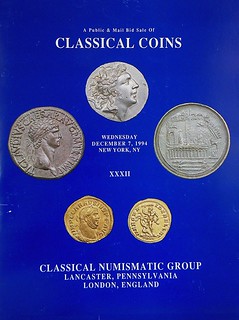
Lot 39 (example)
Lot 37: Canessa’s sale of the Enrico Caruso collection
Lot 39: a complete set of the first 100 CNG sales
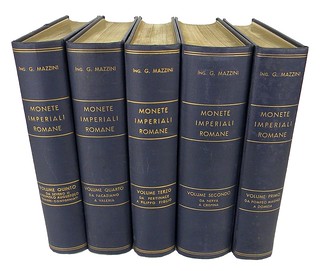
Lot 103
Lot 41: a charming set of the second (preferred) edition of Cohen
Lot 103: a Set of Mazzini’s Monete Imperiale Romane
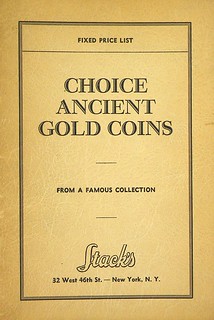
Lot 146
Lot 146: a rare 1942 Stack’s fixed price catalogue of ancient gold coins with photographic plates
Lot 173: a 1965 Vinchon sale of ancient coins with unlisted photographic plates laid in
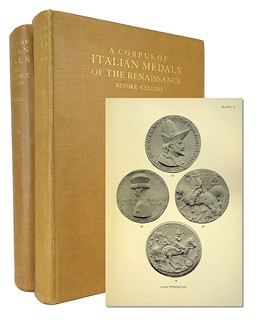
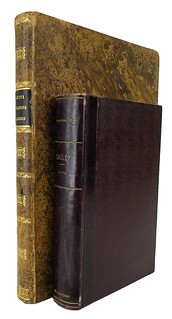
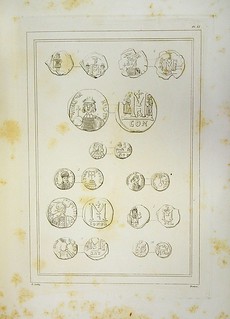
Lots 217 and 250
Lots 217: Hill’s Corpus of Italian Renaissance medals
Lot 250: an original set of Saulcy on Byzantine coins
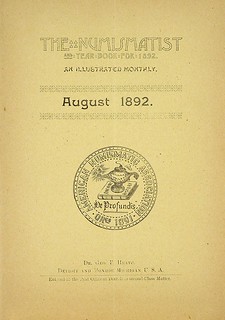
Lot 267
Lot 267: an original, unbound set of Volume 5 of The Numismatist
Lot 277: a rare F.C.C. Boyd catalogue of colonial coins for sale
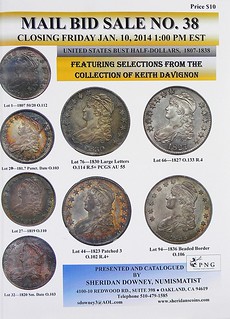
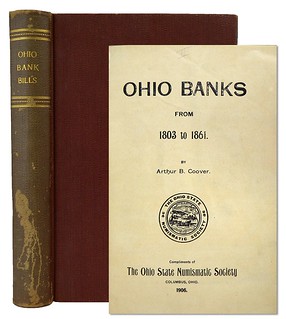
Lots 290 and 378
Lot 290: a virtually complete set of Sheridan Downey sales
Lot 378: two relatively common works on Ohio paper money bound with a third, a very rare 1906 Numismatist offprint on “Ohio Banks from 1803 to 1861.”
The sale also offers exceptionally complete runs of ancient coin catalogues from many of the most important firms, including Harlan Berk, Jean Vinchon, Edward Waddell, Paul-Francis Jacquier, Nomos, Joel Malter, Numismatic Fine Arts, Numismatik Lanz, Frank Sternberg and Bank Leu.
Printed catalogues have been mailed to established clients; a PDF of the catalogue has been posted to the main numislit.com website for those who prefer to read online. In addition, prospective bidders are able to access the live online catalogue and register to bid in Part I of the sale through auction.numislit.com.
Kolbe & Fanning Numismatic Booksellers LLC is a licensed and bonded auction firm in the State of Ohio. For more information, please see the Kolbe & Fanning website at numislit.com or email David Fanning at df@numislit.com. We look forward to your participation.

SIATRAS INTERNATIONAL BOOKSHOP SUMMER 2016 SALES
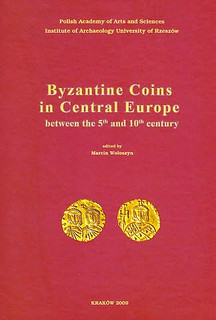 Byzantine Coins in Central Europe
Byzantine Coins in Central Europe
Between the 5th and 10th Century
By Marcin Wołoszyn, et al
# 2268. Krakow: Polish Academy of Arts & Sciences, 2009. Multilingual illustrated edition: papers in German, English or French, with summaries in English. Hard cover, 31X22 cm, 684 pp.; net weight 2225 gr. ISBN 978-83-7676-008-7.
List price EUR 154.00 (USD 175.00) – 50% discount !
Your price: EUR 77.00
Plus shipping cost depending on destination.
ORDERS:
- INVOICE / BANK TRANSFER: Just send a message to siatras@hotmail.com;
- CASH ON DELIVERY; only Austria, Croatia, France, Germany, Hungary, Italy, Luxembourg, Portugal and Turkey.
- EΛΛΑΔΑ & ΚΥΠΡΟΣ: Τηλεφωνήστε 210-3300235.
- PayPal. Use the links at the last page.
ROMANS, BARBARIANS, TREASURES - HISTORICAL INTERPRETATION. THE INTERNATIONAL COOPERATION:
- Tribute und Jahrgelder in frühmittelalterlichen Königsschätzen als Faktoren der Münzdistribution in Ostmitteleuropa, by Matthias Hardt
- A network for the study of coin finds in Europe, by Georges Depeyrot
LATE ANTIQUITY: EMPIRE
- From Aetius to Clovis: an unpublished argenteus struck at Trier at the end of the 5th century, by François Planet
- INVICTISSIMUS AUTOR — an unusual series of Baduila (Totila): a new example from Croatia, by Željko Demo
- Coin hoards from late 6th and 7th century discovered in the FYROM, by Maja Hadzi-Maneva
- Single finds from the 5th century A.D. in Dobrogea, by Delia Moisil, et al
- Some guiding remarks on Byzantine coin circulation in Dobrogea (6th-7th c. A.D.), by Gabriel Custurea
- La circulation monétaire à (L)Ibida (Scythie Mineure) du Ve siècle au début du VIIe siècle, by Mihaela Iacob
MIGRATION PERIOD: BARBARICUM (4th-5th CENTURY):
- Ost- und weströmische Goldmünzen des 5. Jahrhunderts im Karpatenbecken, by Péter Prohászka
- Spätrömische und völkerwanderungszeitliche Münzhorte und andere Münzfunde im nördlichen Karpatenbecken, by EvaKolníková, Karol Pieta
- Germanic gold bracteates from the hoard in Zagórzyn near Kalisz, by Aleksander Bursche
- Remarks on the inflow of Roman coins into Southern Poland in the second half of the 4th and in the 5th centuries A.D., by Jarosław Bodzek
- A solidus of Theodosius II from Opaka in the context of other finds from distric Lubaczów dated to AD 5th century, by Marcin Piotrowski, Grzegorz Dąbrowski
- Der Zufluss von Solidi in die südlichen Ostseegebiete, by Renata Ciołek
- Late Roman and Byzantine coins found in Denmark, by Helle W. Horsnaes
- Solidus finds in the Northern lands, by Tuukka Talvio
- Byzantinische Münzen des ausgehenden 5. bis beginnenden 8. Jahrhunderts in den östlichen Regionen des Merowingerreiches, by Jörg Drauschke
- Die byzantinischen und karolingischen Fundmünzen aus dem österreichischen Bereich der Avaria — Eine Neubearbeitung, by Heinz Winter
- Finds of the early Byzantine coins of the 6th and 7th century in the territory of the Czech Republic, by Jiří Militký
- Finds of Byzantine coins from the 5th-10th century from the northern part of the Carpathian Basin, by Ján Hunka
- Antike Münzen im Gebiet der Slowakei aus der Zeit des Awarischen Khaganats, by Jozef Zábojník
- Der Fund von Kleinschelken (Siebenbürgen, 1856) im Lichte neuentdeckter Archivdaten, by Péter Somogyi
- Face value or bullion value? Early Byzantine coins beyond the Lower Danube border, by Andrei Gândilă
- Byzantinische Münzen aus dem 6.7. Jh. in Polen, by Marcin Wołoszyn
- Byzantine coin finds from the 6th to the 8th century between Elbe and Oder and their meaning for settlement history, by Felix Biermann
- Byzantine coins of the 5th-9th century and their imitations in the Central and Eastern Ciscaucasus, by Yurij A. Prokopenko
MIDDLE AGES:
- Coin finds of Emperor Constantine V Copronymus in southern Croatia, by Tomislav Šeparović
- The Byzantine Empire and the territories north of the Lower Danube (9th-early 11th c.). The numismatic evidence, by Ernest Oberländer-Târnoveanu
- Byzantine coins from the 9th-10th century from the Czech Republic, by Nad’a Profantová
- The Roman and Byzantine coins in the hoard find from Kelč (Czech Republic), by Luboš Polanský & Lenka Vacinová
- Some remarks on the beginning of influx of Byzantine coins into Wielkopolska in the 10th century, by Adam Gliksman
- A gilded miliaresion from excavations in the market square in Cracow, by Maciej Salamon
- Funde byzantinischer Münzen in Estland, by Ivar Leimus
- A Byzantine solidus coin from the research of B.A. Zvizdec’kyj in Iskorosten, by Andrei V. Petrauskas
- A remarkable 10th century warrior burial from the tumulus on the territory of Prince Volodymyr’s town in Kyiv, by M.M. Ievlev
- New facts in the numismatics of medieval Cherson, by Eugeny Ja. Turovsky
- From money-trade to barter. Economic transformation in Byzantine Crimea (10th-13th century), by Thomas Brüggemann
For more information, see:
https://booksoncoins.blogspot.gr/p/blog-page_11.html
NEW BOOK: ENCYCLOPEDIA OF OBSOLETE PAPER MONEY, VOL. 7
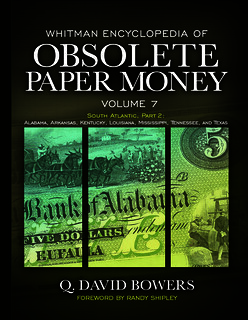 Whitman Publishing announces the upcoming release of volume 7 of the Whitman Encyclopedia of Obsolete Paper Money, by Q. David
Bowers. In 736 pages this volume covers the early bank currency of the Southern states of Alabama, Arkansas, Kentucky, Louisiana, Mississippi,
Tennessee, and Texas. The book will debut on June 28, 2016, and before then can be pre-ordered from booksellers and hobby shops nationwide and online
(including at www.Whitman.com), for $69.95.
Whitman Publishing announces the upcoming release of volume 7 of the Whitman Encyclopedia of Obsolete Paper Money, by Q. David
Bowers. In 736 pages this volume covers the early bank currency of the Southern states of Alabama, Arkansas, Kentucky, Louisiana, Mississippi,
Tennessee, and Texas. The book will debut on June 28, 2016, and before then can be pre-ordered from booksellers and hobby shops nationwide and online
(including at www.Whitman.com), for $69.95.
The Whitman Encyclopedia of Obsolete Paper Money is a multiple-volume study of currency issued from 1782 to 1866, before the modern era of National Banks and the Federal Reserve. Over the course of these decades more than 3,000 state-chartered banks issued their own paper money, which facilitated much of the nation’s day-to-day commerce.
In volume 7 Bowers, a well-known historian and past president of the American Numismatic Association, gives the history of 182 towns and cities in the states covered, as well as of the nearly 500 bank in those towns that issued this uniquely American currency. Each note is studied, and thousands are pictured in full color, with information on grading, rarity, values, significant auction results, advice for collectors, and more.
“Many old Southern bank notes are out there, waiting to be discovered and identified,” said Bowers. “There are rare bills worth hundreds and even thousands of dollars. At the same time, bargains abound in the marketplace, and a smart collector can build a beautiful set of historical Southern notes very affordably.”
Active collectors, researchers, dealers, historians, and other experts have volunteered their time and knowledge to help create this new encyclopedia series. The state editors for the Southern states of Alabama, Arkansas, Kentucky, Louisiana, Mississippi, Tennessee, and Texas included noted specialists and researchers Rodney Kelley, Tony Swicer, Randy K. Haynie, Justin McClure, Gary Burhop, and Mike Marotta.
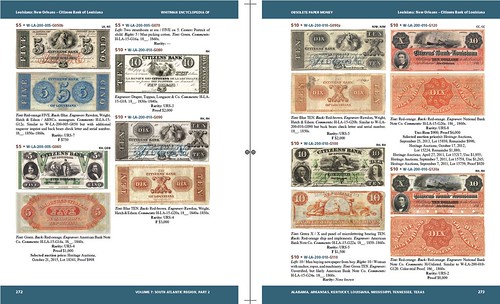
Paper-money expert Randy Shipley wrote the foreword to volume 7. “Obsolete bank notes provide us with a very real glimpse into this great nation’s past,” Shipley said. “Our banking system has changed, although our history has not. The beauty, appeal, allure, and value of obsolete bank notes is almost unimaginably captured by Bowers within these pages. An amazing feat, to say the least.”
Whitman Senior Associate Editor Caitlyn Trautwein said, “Until now, the histories of these Southern towns and banks have not been presented in a way that is accessible for collectors. Volume 7 of the Whitman Encyclopedia changes that, as the histories have been compiled from dozens of primary and secondary sources and collated into a single invaluable resource.”
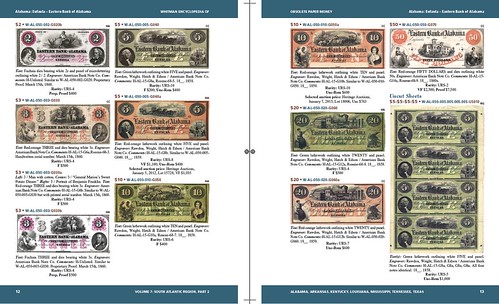
Earlier volumes of the Whitman Encyclopedia of Obsolete Paper Money include an overview of the field, and detailed coverage of the New England states of Connecticut, Maine, New Hampshire, Massachusetts, Rhode Island, and Vermont, as well as the Southern states of Florida, Georgia, North Carolina, and South Carolina. Future volumes will cover the rest of the South Atlantic states, the Mid-Atlantic states, the American Midwest, the District of Columbia, and territories.
Collectors, dealers, historians, and hobbyists interested in assisting on future volumes may contact Whitman Publishing at Obsoletes@Whitman.com.
Because Whitman Publishing is the Official Supplier of the American Numismatic Association, ANA members receive a 10% discount when ordering directly. The book can also be borrowed for free as a benefit of membership, through the Dwight N. Manley Numismatic Library.
Whitman Encyclopedia of Obsolete Paper Money
Volume 7: South Atlantic, Part 2—Alabama, Arkansas, Kentucky, Louisiana, Mississippi, Tennessee, and Texas
By Q. David Bowers; edited by Rodney Kelley, Tony Swicer, Randy K. Haynie, Justin McClure, Gary Burhop, and Mike Marotta; foreword by Randy
Shipley
ISBN 0794843964
Hardcover, 8.5 x 11 inches, 736 pages
Full color
Retail $69.95 U.S.
Inside volume 7: How to use this book ● The obsolete bank notes of Alabama, Arkansas, Kentucky, Louisiana, Mississippi, Tennessee, and Texas, covering 182 towns and cities and 492 banks, including Proofs, remainders, and uncut sheets, and counterfeit, spurious, and altered notes ● Glossary ● Bibliography ● Detailed index ● 2,200+ images ● 5,262 individual notes
To read the earlier E-Sylum articles, see:
NEW BOOK: WHITMAN ENCYCLOPEDIA OF OBSOLETE PAPER MONEY
(www.coinbooks.org/esylum_v17n21a03.html)
NEW BOOKS : ENCYCLOPEDIA OF OBSOLETE PAPER MONEY, VOLS 3 & 4
(www.coinbooks.org/esylum_v17n44a03.html)
NEW BOOK: ENCYCLOPEDIA OF OBSOLETE PAPER MONEY, VOL. 5
(www.coinbooks.org/esylum_v18n12a03.html)
NEW BOOK: ENCYCLOPEDIA OF OBSOLETE PAPER MONEY, VOL. 6
(www.coinbooks.org/esylum_v19n03a05.html)
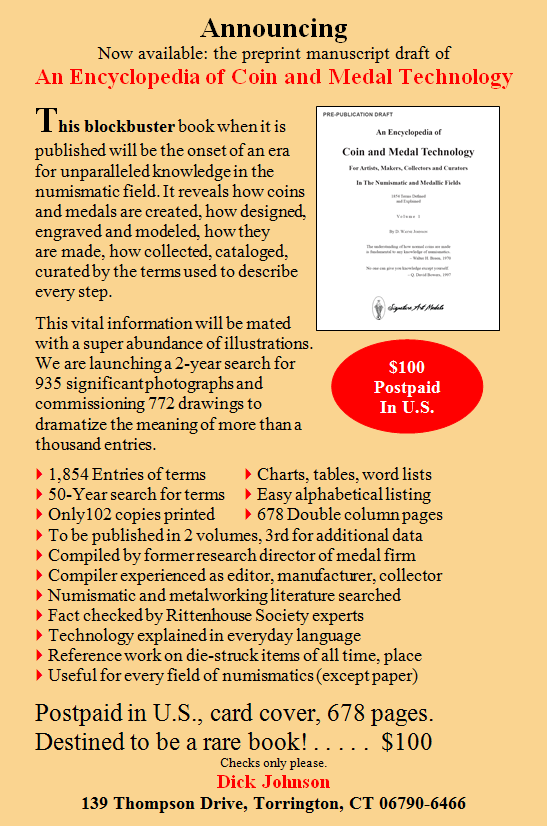
NEW BOOK: 2017 STANDARD CATALOG OF WORLD COINS, 1901-2000
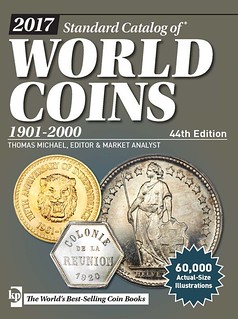 2017 Standard Catalog of World Coins, 1901-2000
2017 Standard Catalog of World Coins, 1901-2000
44th Edition
By Thomas Michael
The 2017 Standard Catalog of World Coins, 1901-2000, 44th edition, provides the most compelling and complete reference to 20th century coins on the market.
Unsurpassed in content and coverage, this massive, tradition-rich catalog, vetted by an international network of experts, provides a comprehensive worldview for beginning or serious collectors, researchers and coin dealers specializing in 20th century coins.
Extensive yet easily managed, the catalog is organized by country, and each listing provides:
- Current values for coins listed by date, mintmark and grade
- Globally accepted KM reference numbers
- Clear description and invaluable detail
What's more, listings for coins minted in silver, gold, platinum and palladium offer key information for navigating the often-turbulent precious metals seas, including:
- Total coin weight
- Fineness
- Actual precious metal weight
For more than four decades, the Standard Catalog of World Coins, 1901-2000, has made it possible to invest with confidence in a hobby offering a rich reward!
About the Author
Editor and Market Analyst Thomas Michael has served as director of world coin values for all of Krause Publications' world coin
catalogs for the past 30 years. Equipped with a Bachelor of Arts degree in history and Master of Arts degree in economics, Michael, who has
a lifelong passion for numismatics, has played a critical role in the creation of more than 100 industry-leading references.
SKU: S9924
Author/Speaker/Editor: Thomas Michael
Format: Paperback
ISBN 13: 9781440246548
Number Of Pages: 2352
For more information, or to order, see:
2017 Standard Catalog of World Coins, 1901-2000
(www.shopnumismaster.com/2017-standard-catalog-of-world-coins-1901-2000)
RED BOOK RECOLLECTIONS: RICHARD SCHWARY
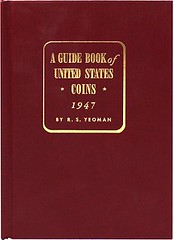 Coin Update continues its series dedicated to reflecting on the long history of Whitman Publishing’s Guide Book of United States Coins,
also known as the Red Book, now in its 70th edition. “Red Book Recollections” features personal reflections written by Red Book contributors,
collectors, and others with the aim of providing different perspectives on the long-lived reference work.
Coin Update continues its series dedicated to reflecting on the long history of Whitman Publishing’s Guide Book of United States Coins,
also known as the Red Book, now in its 70th edition. “Red Book Recollections” features personal reflections written by Red Book contributors,
collectors, and others with the aim of providing different perspectives on the long-lived reference work.
Our second narrative comes from Richard Schwary, Red Book contributor, former president of the Professional Numismatists Guild, and president of California Numismatic Investments.
Over the years the name “Red Book” became so comfortable that even today I pause a moment to recall the actual title of A Guide Book of United States Coins when recommending it to the public. Like today, it was an absolute necessity when I was in grade school. But in those early years pricing was rather flat so a new copy each year was considered a luxury. I taped and numbered my most popular sections, those being silver dollars and Lincoln cents, for easy access. And when constant use broke down the binder I repaired it with more tape and reinforcements. There were, of course, other good sources of information but these insights were simply noted in the margins of my current Red Book and the back cover used to note questions or other things of interest.
Years later it was these fond memories that made being a price contributor to this fine book a particular honor. But the really fortunate part of this numismatic fun happened at the 1987 ANA convention. Concurrently each year the Professional Numismatists Guild held its annual banquet. After a round of drinks and the usual conversation we all settled down to a table for dinner and the usual festivities. The seat next to me was vacant and soon a dignified older fellow sat down and began a polite conversation. His dress was a conservative suit and tie and we talked quietly about the banquet and the number of people attending. After a few minutes it dawned on me that this was Richard S. Yeoman. I excused myself and said, “You must be Richard Yeoman, of Red Book fame.” I had never met him in person so I introduced myself.
He shook my hand and quietly said, “Why, yes I am, it is nice to meet you.” That was it, not an ounce of pretense in this man who helped form the complete structure of my early coin career. At any ANA convention the amount of bravado most dealers are exposed to amounts to something like going to the Super Bowl. But here, by complete chance I talked with an icon whose book will always be quoted. Yet he was so unassuming that it caught me quite off guard. Our entire conversation had nothing to do with his accomplishments but focused on the coin industry. To say that such a touch is rare today has to be an understatement.
As the night drew to a close we all prepared to leave, and I could not help but wonder: how many people recognized this conservatively dressed gentleman? This banquet room was filled with noted dealers, numismatic scholars, the coin press, fascinating writers, and interesting coin people of every stripe. Yet how many of these notables could claim to have touched everyone in the room? Surely such a list would be short, but R.S. Yeoman and A Guide Book of United States Coins would be a contender for first place.
Richard Schwary’s recollection first appeared in A Guide Book of the Official Red Book of United States Coins by Frank J. Colletti.
To read the complete article, see:
Red Book Recollections: Richard Schwary
(http://news.coinupdate.com/red-book-recollections-richard-schwary/)

WALTER PERSCHKE 1939-2016
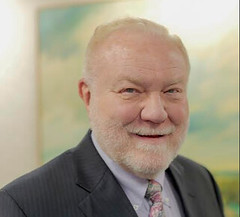 If there’s a coin equivalent of the Honus Wagner baseball card — the Holy Grail for collectors — it’s the celebrated Brasher doubloon, the
first gold coin struck in the United States and one of the rarest in the world.
If there’s a coin equivalent of the Honus Wagner baseball card — the Holy Grail for collectors — it’s the celebrated Brasher doubloon, the
first gold coin struck in the United States and one of the rarest in the world.
The doubloon was created in 1787 by silver and goldsmith Ephraim Brasher, whose clients included his neighbor, George Washington.
Just seven 1787 Brasher doubloons are known to exist. Chicago coin dealer Walter Perschke’s was considered the finest.
“It was struck before the U.S. Mint even started operating in 1792,” said Max Spiegel, vice president of sales and marketing for the Numismatic Guaranty Corporation, which graded Mr. Perschke’s doubloon for him.
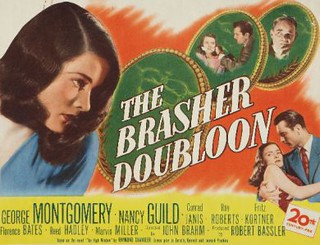 The storied coin even figured in the 1947 Philip Marlowe film noir “The Brasher Doubloon.”
The storied coin even figured in the 1947 Philip Marlowe film noir “The Brasher Doubloon.”
It’s a glowing beauty. One side is stamped with an eagle, its talons bearing an olive branch and arrows, signifying peace and power. Its right wing is imprinted with “EB,” Brasher’s initials. The flip side shows sunrise over mountains and the sea, symbolizing the nation’s new beginnings, according to Spiegel.
When Mr. Perschke bought it for a world-record $430,000 in 1979, “It was a breathtaking event,” said Jeff Bernberg of Willowbrook’s Rarcoa (Rare Coin Company of the World).
Mr. Perschke, who died May 20 in Chicago of bladder cancer at age 77, talked about the doubloon’s mystique in a 1987 Chicago Sun-Times interview.
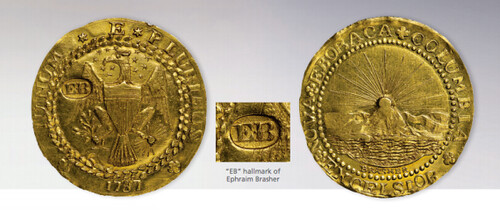
In 1979, when he bought the Brasher doubloon, it made international headlines. It hadn’t been up for auction for 57 years and had last sold in 1922 for $3,000 — a record at the time.
Mr. Perschke held onto the doubloon for 35 years before auctioning it off for $4.59 million.
Mr. Perschke’s fascination with coins began as a student at Lane Tech High School on the North Side.
“His history teacher got him involved in a coin club,” said another son, Adam, and he became the entrepreneur-owner of Numisco, a company that dealt in precious metals and coins.
He appeared often on TV on “Wall Street Week” and WCIU-Channel 26’s “Ask an Expert.”
“He was driven,” Ian Perschke said of his father. “And he accomplished a lot.”
After selling the doubloon, Mr. Perschke invested in something completely different: spirituality. He bought the Monthly Aspectarian magazine, renaming it Conscious Community. It promotes spirituality, body-mind health and higher consciousness. The July issue is dedicated to him, circulation manager Kasia Szumal said.
Mr. Perschke offered guided meditation and operated Spiritual Learning Center camps in Indiana, where participants were invited to “join us in a spiritual retreat of personal discovery,” according to Facebook.
“His famous talks were about dream interpretation and visualizing success,” Szumal said.
To read the complete article, see:
Coin dealer Walter Perschke, dead
at 77, owned storied doubloon (http://chicago.suntimes.com/news/coin-dealer-walter-perschke-dead-at-77-owned-storied-doubloon/)
Walter was born on February 25th, 1939 in McHenry, Illinois to Walter and Marie Perschke. He attended high school at Lane Tech and received his undergraduate degree from The University of Chicago, where he ran track and was the president of his fraternity, Psi Upsilon. He was an internationally-renowned numismatic expert and businessman, known for acquiring storied coins such as the Brasher Doubloon and the American Quint. He was a finance columnist for Chicago Daily News, had his own Emmy-nominated TV show, Ask an Expert, and appeared regularly on PBS's Wall Street Week.
To read the complete obituary, see:
Walter Perschke
(www.legacy.com/obituaries/chicagotribune/obituary.aspx?pid=180150059)
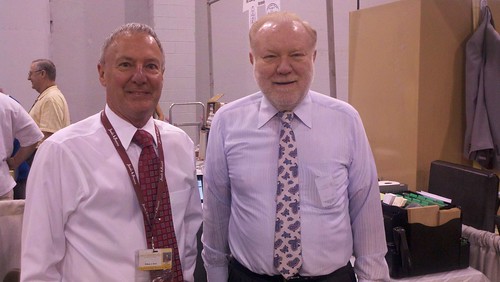
Bill Burd and Walter Perschke
To read the earlier E-Sylum article, see:
WAYNE'S NUMISMATIC DIARY: AUGUST 21, 2011
(www.coinbooks.org/esylum_v14n35a13.html)
THE NEWMAN PORTAL SCANS THE CALCOIN NEWS
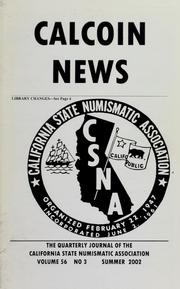 The Calcoin News was published by the California State Numismatic Association (CSNA) from 1947 to 2003, and the Newman Portal
has scanned the entire run of this regional publication. Early issues, c. 1950-1970, share a “look and feel” with the nationally circulated
Numismatic Scrapbook Magazine – so much that one wonders if the same printer was used for both. The content is similarly comparable,
with the exception of the voluminous advertising found in Scrapbook.
The Calcoin News was published by the California State Numismatic Association (CSNA) from 1947 to 2003, and the Newman Portal
has scanned the entire run of this regional publication. Early issues, c. 1950-1970, share a “look and feel” with the nationally circulated
Numismatic Scrapbook Magazine – so much that one wonders if the same printer was used for both. The content is similarly comparable,
with the exception of the voluminous advertising found in Scrapbook.
Later issues demonstrate the move to desktop publishing, along with a continued standard of useful research. The Spring 2000 issue, for example, features an analysis of signatures of Francis Spinner, who signed many currency notes and documents in his capacity as a bank official, congressman, and U.S. Treasurer.
In 2004, CSNA joined forces with the Numismatic Association of Southern California (NASC) to publish The California Numismatist. This publication continues today, jointly published by both organizations, with Greg Burns as Editor. The Newman Portal wishes to thank Greg Burns and Howard Feltham, CSNA President, for their assistance with this project.
Link to Calcoin News on the Newman Portal:
https://nnp.wustl.edu/library/publisherdetail/512448
NCCA MONOGRAPH #3: LIBERTY SEATED COINAGE
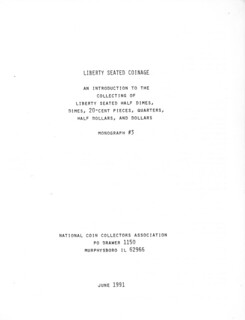 Monograph #3 LIBERTY SEATED COINAGE: AN INTRODUCTION TO THE COLLECTING OF LIBERTY SEATED HALF
DIMES, TWENTY-CENT PIECES, QUARTERS, HALF DOLLARS, AND DOLLARS. (6/91)
Monograph #3 LIBERTY SEATED COINAGE: AN INTRODUCTION TO THE COLLECTING OF LIBERTY SEATED HALF
DIMES, TWENTY-CENT PIECES, QUARTERS, HALF DOLLARS, AND DOLLARS. (6/91)
To read the earlier E-Sylum article, see:
NATIONAL COIN COLLECTORS ASSOCIATION MONOGRAPHS
(www.coinbooks.org/esylum_v19n23a12.html)
THE BOOK BAZARRE
NOTES FROM E-SYLUM READERS: JUNE 12, 2016
M.A. Powills, Numismatic Bibliophile
Dick Johnson writes:
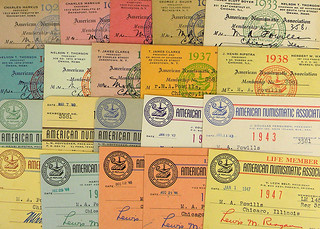 M.A. Powills was mentioned in last week’s E-Sylum where his ANA membership cards were illustrated. Mike was an exceptional
numismatist and fine gentleman but demanded condition in his books as well as his coins. When I visited his home in South Chicago once He showed me
his extensive numismatic library.
M.A. Powills was mentioned in last week’s E-Sylum where his ANA membership cards were illustrated. Mike was an exceptional
numismatist and fine gentleman but demanded condition in his books as well as his coins. When I visited his home in South Chicago once He showed me
his extensive numismatic library.
He had special shelves made which were beveled on the front edge. This allowed the bottom spine never to touch the shelf. No matter how wide or deep a book was they all extended a fraction of an inch beyond this bevel. Obviously all his books were mint condition. Occasionally he sold duplicates from his library by fixed list price (some of which ended up in my library). After his death this library was sold in four Kolbe sales, 1966-69.
To read the earlier E-Sylum article, see:
SELECTIONS FROM Kolbe & Fanning’S SALE #142
(www.coinbooks.org/esylum_v19n23a02.html)
More on Kelly's Coins & Chatter
Regarding the completeness of the Newman Numismatic Portal's digitized set of Kelly's Coins & Chatter, David Gladfelter
writes:
Michael Sullivan says that the list of 127 issues in Bourne is complete. See The Asylum 11(3):11. I have a bound volume containing 110 of them.
The one and only issue I have in my collection is the first trial issue. I have scanned and submitted the copy to the Newman Portal Lib. Here is a copy of the first page.
To read the earlier E-Sylum article, see:
NEWMAN PORTAL SCANS KELLY’S COINS AND CHATTER
(www.coinbooks.org/esylum_v19n23a10.html)
Vocabulary Word: Papyrologist
James Higby writes:
I love reading a book or an article that contains a word I have never seen, yet know instantly what it means. This was the case while reading "The Harlan J. Berk Ltd. Numismatic Library" by Shanna Berk Schmidt in the most recent number of The Asylum. "Papyrologist" - the word just rolls off the tongue with linguistic class and grace!
Gawain O'Connor on Zinc Coins
Regarding the May 29, 2016 E-Sylum article by Gary Beals headlined Zinc, You Stink!, Gawain O'Connor writes:
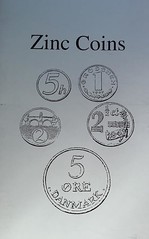 One of my main collecting goals when I was in high school was to get all the different zinc coins from around the world. I eventually
produced a pamphlet (and sent a couple to the American Numismatic Association library - call number CC68.O2).
One of my main collecting goals when I was in high school was to get all the different zinc coins from around the world. I eventually
produced a pamphlet (and sent a couple to the American Numismatic Association library - call number CC68.O2).
I agree pure zinc leaves much to be desired as a coinage metal, but it is great in alloys. But I do wonder why the U.S. Mint doesn't use bronze blanks for the one cent proof coins - I think the extra expense would have been worth it to continue the copper/bronze cent tradition.
To read the earlier E-Sylum article, see:
GARY BEALS: ZINC, YOU STINK! (www.coinbooks.org/esylum_v19n22a13.html)
Printing the Zero-Rupee Note
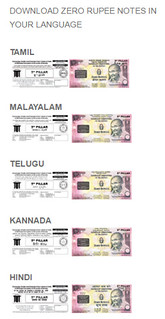 Regarding locating examples of the zero-Rupee anti-corruption note, Ron Haller-Williams writes:
Regarding locating examples of the zero-Rupee anti-corruption note, Ron Haller-Williams writes:
You said, "We're still looking for an example", echoing John Mutch's query in the previous newsletter.
Well, if you follow back the thread, you'll see that the whole idea is from "5th Pillar". So go to http://www.5thpillar.org/programs/zero-rupee-note and select a language from TAMIL, MALAYALAM, TELUGU KANNADA or HINDI. Of course, these might not be exactly the same as the 3,000,000+ handed out by 5th Pillar and its supporters, but ... Or go to http://zerocurrency.org/ where it is suggested that you select from a long list the country appropriate for your needs, in order to print your own! (one side only, unfortunately).
To read the earlier E-Sylum article, see:
MORE ON COLLECTING ZERO RUPEE NOTES
(www.coinbooks.org/esylum_v19n23a34.html)
The Millionaire and the Bard
Regarding the book The Millionaire and the Bard, Ralf Böpple writes:
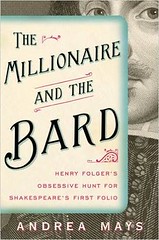 Just a quick note to let you know that indeed there was one reader very much interested in this book. Thanks for bringing it up and thanks
for "allowing" it into the newsletter. If I look back at the number of books - numismatic and non-numismatic - that I have read over the
last years thanks to them having been been mentioned here!
Just a quick note to let you know that indeed there was one reader very much interested in this book. Thanks for bringing it up and thanks
for "allowing" it into the newsletter. If I look back at the number of books - numismatic and non-numismatic - that I have read over the
last years thanks to them having been been mentioned here!
In the mid-1990s when I was in Washington for the first time, my travel companion was very much into Shakespeare, and so she took me to the Folger Library with her. I still remember one thought I had at that time: how crazy it sounded that somebody collected over 80 copies of one and the same edition of the same book.
Not that I couldn't understand it, having been infected with the collector's bug already. In exchange she accompanied me to the Smithsonian's numismatic collection. As an American from the East Coast, she had been to the museum before, with school, on family vacations, but she didn't even know (or remember) that there were coins on permanent exposition. Needless to say, being with somebody who knew a thing or two about coins made it more interesting for her (at least for the first half hour or so..)
To read the earlier E-Sylum article, see:
BOOK REVIEW: THE MILLIONAIRE AND THE BARD
(www.coinbooks.org/esylum_v19n23a08.html) 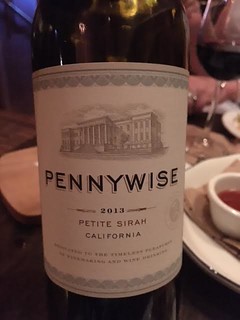
PennyWise Wine
Tom Sheehan writes:
My wife and I are on a road trip to Nantucket. We're in Chicago for the weekend and found this wine. Not bad!

NINETEENTH CENTURY U.S. MINT PROOF DIE TERMS
I get a lot of feedback from numismatists who acquire a copy of my Encyclopedia of Coin and Medal Technology. These experts amplify – or even correct – statements found in an entry in which they have extensive or expert knowledge. One of these arrived this week from early American coinage expert Craig Sholley.
Craig mentioned a term I was unaware of; Hydrogen Embrittlement and also mentioned Pitting Corrosion.
Hydrogen Embrittlement
He stated the hydrogen embrittlement was fairly common on US proof dies from 1836 to early 1900s. This was caused by the use of acid etch
to create the frosting or satin surface on proof dies. This anomaly is not observed on coins prior to 1836 because of the small number of
proofs struck.
I would like to add the year 1836 was an important date because coinage was influenced after that year by technologies Franklin Peale learned at European Mints and applied these practices for coinage at the Philadelphia Mint. Apparently Peale didn’t learn how to prevent this or Mint officials there didn’t inform him.
Pitting Corrosion
Pitting corrosion, Craig goes on to say, occurred on dies as early as the 1800s and up thru the late 1880s.
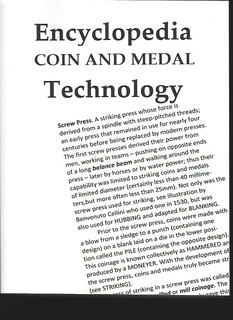 Regarding the Encyclopedia, Chester Sullivan writes:
Regarding the Encyclopedia, Chester Sullivan writes:
Last week I received my preprint manuscript draft of Dick Johnson's An Encyclopedia of Coin and Medal Technology. Turning its pages provided me a whirlwind tour through fascinating and necessary information. I urge all readers of The E-Sylum to support his mammoth project. And I'm eager to see the finished product.
For more information on Dick's book, see:
NEW BOOK: ENCYCLOPEDIA OF COIN AND MEDAL TECHNOLOGY
(www.coinbooks.org/esylum_v19n17a05.html)
THE BOOK BAZARRE
DAVIDGE GAMBRILL (1836-1905)
Davidge Gambrill (1836-1905), was born August 8, 1836, Anne Arundel County, Maryland, son of Dr. Stevens Gambrill (1799-) and Elizabeth (1803- ). The distinguished Gambrill family also owned a farm in Anne Arundel County, Maryland. The family name is often given variant spellings such as Gambrell, Gambril, &c.
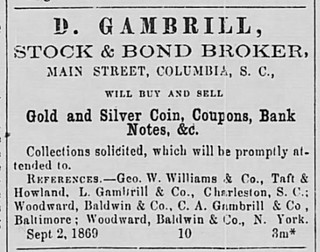 Davidge Gambrill became a broker and dealer in gold and silver coins, and broken bank bills and other paper money though his main business
was as a stock and bond broker, real estate and insurance broker and agent. This combination of business venues except that of stock and bond broking
was typical of many of the well-known northern coin dealers like Ebenezer Locke Mason, Jr., for example. The coin dealerships of the southern states
from the 1860's to the 1890's remained closer associated to banking than in the northern states. Of course, we have a few exceptions like
Luther Brown Tuthill, the renown Confederate note dealer.
Davidge Gambrill became a broker and dealer in gold and silver coins, and broken bank bills and other paper money though his main business
was as a stock and bond broker, real estate and insurance broker and agent. This combination of business venues except that of stock and bond broking
was typical of many of the well-known northern coin dealers like Ebenezer Locke Mason, Jr., for example. The coin dealerships of the southern states
from the 1860's to the 1890's remained closer associated to banking than in the northern states. Of course, we have a few exceptions like
Luther Brown Tuthill, the renown Confederate note dealer.
In 1864, he was drafted during the Civil War and is listed as working as a laborer at Annapolis Junction.
 He moved to Charleston, South Carolina in 1866 as a broker of Phosphate of Lime and Mexican Guano, at Taft & Howard’s, Charleston, South
Carolina. In 1869, he moved to Columbia, South Carolina and worked as a specie coin and bank bills broker beginning in July.
He moved to Charleston, South Carolina in 1866 as a broker of Phosphate of Lime and Mexican Guano, at Taft & Howard’s, Charleston, South
Carolina. In 1869, he moved to Columbia, South Carolina and worked as a specie coin and bank bills broker beginning in July.
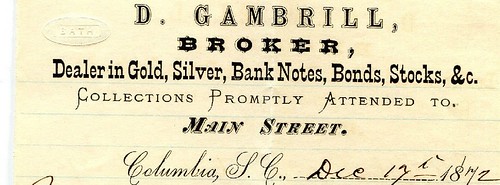
He seems to have retired in the summer of 1875, although working occasionally since he is in the 1900 U. S. Census listed as a Broker and Insurance Agent.
He died December 14, 1905 at his home 1219 Henderson, Columbia, Richland County, South Carolina. He is buried at Trinity Episcopal Church Cemetery, Columbia, Richland County, South Carolina.
To read the complete article, see:
GAMBRILL, DAVIDGE
(https://sites.google.com/a/numismaticmall.com/www/numismaticmall-com/gambrill-davidge)
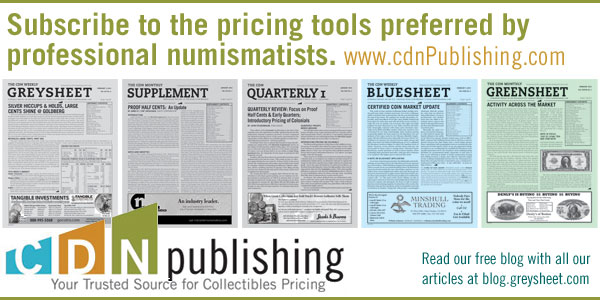
MORE ON CARLING GRESHAM
President Wilson finally acted to shake the Society out of the doldrums, and found a figurative dynamo to serve as the new editor of The Asylum. Carling Gresham, a Florida dealer in numismatic ephemera, and an early enthusiast for the use of the personal computer, went to work with a will, and the first issue of The Asylum under his editorship was dated Summer, 1984. A colorful character, Gresham transformed the journal by adopting a chatty and informal style. He proved adept at inspiring new contributors; both Joel J. Orosz and Wayne Homren, for example, first published in The Asylum during Gresham's tenure.
Carling also managed (with the aid of one double issue) to get the journal on a regular publishing schedule. His lively editorial comments skewered everyone; even co-founder Kolbe was not immune. When George moved from Mission Viejo to the higher elevation of Crestline, the editor delightedly referred to him as "Mountain Man Kolbe." The regular appearance of The Asylum sparked a revival in the fortunes of the Society, and membership began to grow. The second dawn for the NBS, however, was destined to have but a short life.
As much a part of Gresham as his energy and wit was his pride; and it was that pride that led him to be quick to utter and publish decided opinions. One such opinion, expressed about the editor of The Numismatist, caused a storm that ultimately cost Gresham his position. In an editorial appearing in the Summer, 1985 issue of The Asylum, Carling blasted off a salvo at the lack of coverage the NBS had received from hobby publications, concentrating his fire particularly on The Numismatist, " Where HRH [His Royal Highness] Harris [N. Neil Harris, editor/publisher] won't print anything about NBS!" Gresham went on: "HRH appears to be one of a number of employees at ANA Hq. who believe that we, collectors AND dealers are working for them NOT the other way around." (Gresham, as can be seen in the passage just quoted, was fond of capitalization for the purpose of placing emphasis on an idea.)
Reaction, and counter-reaction, was swift - and seething. In the following number (Fall & Winter, 1985), the issue was debated in no fewer than nine pages of letters. Large Cent stalwart Denis Loring wrote to say he was " incensed at the diatribe against Neil Harris " George Frederick Kolbe, by now NBS president, who had been copied on Loring's letter, wrote to say that he agreed with Loring's sentiments. Former president and current board member, Cal Wilson, who had also been copied by Loring, wrote to say that he had " sought out Neil Harris during the Baltimore [ANA] Convention, and on behalf of the Numismatic Bibliomania Society, offered our sincere apologies."
Gresham printed all three letters, but responded in slashing style to each. Addressing Loring, he snapped "I reject you as a surrogate for HRH, and I reject your request for an apology." Gresham then suggested to Loring "Why don't you spend your time doing something creative for the NBS?" In response to Wilson's letter, Gresham accused him of groveling to Harris (who could offer publicity to Wilson's bibliopole business) and to Loring (who was one of Cal's major customers). Carling closed by snapping at Wilson: "Your patronizing attitude is very revulsive to me, but I understand the economics of your position."
This tart exchange was the last straw for Wilson, who on December 9, 1985 sent a letter to all board members recommending that Gresham be relieved of his duties and replaced by Joel J. Orosz, a charter member of the NBS who was then a museum curator. The board decided that Gresham should edit the first issue of 1986, with Orosz to take the reins for the remaining three. There followed instead an interregnum of several months, during which time no issue appeared, and the files of The Asylum, which were to have been transferred between the outgoing and incoming editors, were transferred only belatedly, and partially. As the summer of 1986 arrived, no issue of The Asylum had been produced for three-quarters of a year. Once again, the NBS appeared to be all but defunct.
During the next two years, the NBS did yet another imitation of Lazarus. Once again, the renaissance of the Society was led by the regular appearance of its journal. Editor Orosz managed to deliver it on time from the summer of 1986 through the summer of 1988. In fact, he became the first editor of The Asylum to produce four separate issues in a single calendar year (1987). This dependable publishing feat, however, was always a skin-of-the-teeth affair. Copy was in perpetually short supply, leading Orosz to write both a "From the Editor" column at the beginning, and a "Last Word" column at the end of every issue. Even so, three of the eight numbers emitted during these two years were an anemic sixteen pages. To his credit, deposed editor Gresham contributed four articles during these two years, providing the margin between publishing and missing an issue on more than one occasion. And there were some truly important pieces published: Gresham on Don Jose Toribio Medina, and P. Scott Rubin on the discovery of the 1907 ANA sale, for example.
Alan Luedeking writes:
You asked for more thoughts on Carling Gresham. Although I never knew him personally, or even talked to him, I held him in high esteem for the respect in which I held his work. A prime example of this was his seminal study on the numismatic works of José Toribio Medina, published in 1985-86, in Vol. III, Nos. 3 & 4 and Vol. IV Nos. 1 & 2 of The Asylum, which, in his own words, was a rewrite of the article that first appeared in the NI Bulletin, November, 1983. From this excellent and meticulous study, I wish I had known him personally.
To read the complete NBS History, see:
A History of the NBS (www.coinbooks.org/about/)
To read the earlier E-Sylum article, see:
MYSTERY NUMISMATIST: CARLING GRESHAM
(www.coinbooks.org/esylum_v19n23a16.html)
THE BOOK BAZARRE
MORE ON HALL OF FAME FOR GREAT AMERICANS MEDALS
Dave Lange writes:
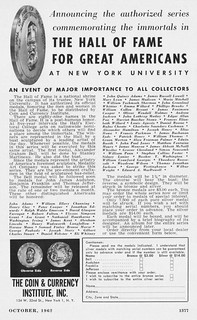 Regarding the Hall of Fame medals, I've never acquired any of these, but I've been trying to locate the display album for them for
many years now. If past experience is any predictor, I may have to buy the album complete with medals, as I've done this for several of the
Medallic Art Company albums printed by Whitman.
Regarding the Hall of Fame medals, I've never acquired any of these, but I've been trying to locate the display album for them for
many years now. If past experience is any predictor, I may have to buy the album complete with medals, as I've done this for several of the
Medallic Art Company albums printed by Whitman.
Both the HOF medals and the album were distributed by the Coin & Currency Institute, which was the publishing division of Robert Friedberg's Capitol Coin Company. The entire line of medals and the album were sold through his chain of department store coin counters during the 1960s. The medal series kicked off in the fall of 1962, with the album following some time later.
I'm attaching a couple of ads from The Numismatist that illustrate this promotion. The second is a two-page spread that also lists the department stores then part of the Friedberg concessions.
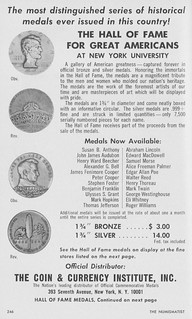
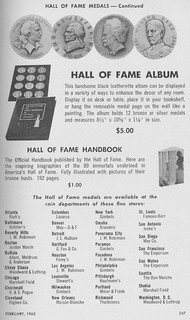
Rich Jewell writes:
You asked if any readers had a complete set of this series, well I have to admit that I own a complete set. The 3" in bronze, and the 1-3/4" in bronze and silver. I completed the collection in 2007.
One interesting aspect of the Medal series was it was open to the initial sculptors who did the bronze bust to do the medals.
Eight sculptor/engravers answered the call:
Granville Carter did the Jane Addams- sculptor & medal
Stanley Martneau did the Alexander Graham Bell- sculptor & medal
Stanley Martineau did the Josiah Willard Gibbs- sculptor & medal
Walker Hancock did the Stephen C. Foster- sculptor & medal
Joseph Kiselewski did the Oliver Wendell Holmes,Jr-sculptor & medal
Joseph Kiselewski did the Sylvanus Thayer- sculptor & medal
C. Paul Jennewein did the Edward MacDowell-sculptor & medal
Laura Gardin Fraser did the sculpture of Gilbert C. Stuart and she and K. Gruppe are credited with doing the medal
Malvina Hoffman did the Henry David Thoreau-sculptor & medal
Paul Fjelde did the Orville Wright bust (only) and the medal
Rich Jewell adds:
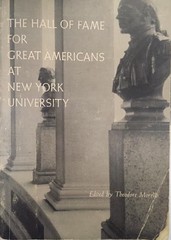 I do not have the album. What I do have is the book the NYU Press published in 1962 (The Hall of Fame for Great Americans at New York
University) edited by Theodore Morello. It is one hundred ninety-two pages with photos of the busts, biographies of the awardees and diagrams of
the colonnade and the layouts of the busts through June of 1961. Truly a great old book.
I do not have the album. What I do have is the book the NYU Press published in 1962 (The Hall of Fame for Great Americans at New York
University) edited by Theodore Morello. It is one hundred ninety-two pages with photos of the busts, biographies of the awardees and diagrams of
the colonnade and the layouts of the busts through June of 1961. Truly a great old book.
The book does not deal with the medals at all. The medals didn't start until 1963, a good two years after this book was published. Other information from the book lists the year the individuals were elected to the HoF, names that were not chosen by the committees, sculptors of the busts, the college of electors from 1900 through 1960 and donors of the busts, just to name some additional information.
To read the earlier E-Sylum article, see:
HALL OF FAME FOR GREAT AMERICANS MEDALS
(www.coinbooks.org/esylum_v19n23a23.html)

ANA SUMMER SEMINAR COURSE ON MEDALS
David Menchell writes:
David Alexander and I will be teaching a course on Medals and Medal Collecting at the American Numismatic Association Summer Seminar. The course will cover a range of topics from how to describe the various features of medals to their manufacture, and will include an historical survey of medals and engravers from the Renaissance to modern times.
29. Introduction to Medals and Medal Collecting
“Introduction to Medals” opens with the birth of the medal during the Renaissance through artists such as Antonio Pisano. From Italy the
medal crossed the Alps into Austria, Germany, the Netherlands, France and England. Students will be introduced to medals of the wars of
religion, and the medallic history of French King Louis XIV, Britain’s Queen Anne and French Emperor Napoleon I. The role of the Paris and
Philadelphia Mints in creating early American medals will be explored, along with medals such as Comitia Americana pieces of the
Revolution, military and presidential medals and sculptural art medals.
Topics include the evolution of medal production, the role of engravers and sculptors, dating, patination, reference books and catalogs, medal preservation and storage, grading, and determining value. Instructors: David T. Alexander, founder of Medal Collectors of America, prolific author including the award winning book, American Art Medals, 1909-1995, Circle of Friends of the Medallion and Society of Medalists; and David Menchell, president of the Medal Collectors of America, ANA district representative, exhibit judge and award-winning exhibitor
For more information, see:
https://www.money.org/summer-seminar
MEDAL COLLECTORS OF AMERICA 2016 MEETING
Tony Lopez submitted this press release for the Medal Collectors of America Annual Meeting on Thursday, August 11. Thanks. -Editor
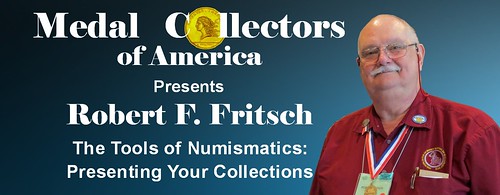
American Numismatic Association - World’s Fair of Money
Thursday, August 11, 2016
2:00 PM
Anaheim Hilton Hotel
Huntington A Meeting Room
No matter what we collect, we have to organize our holdings and present them somehow. This requires tools and materials that are not found in a traditional coin shop. Scales and calipers, nippers and scissors, card stock and poster-board are all found at other stores around town. Using a sonic sealer to best advantage, or coming up with a way to present and store hanging badges or military awards are also explored. This presentation is full of tips and techniques the presenter has developed over his years of
Bob started collecting coins in 1968 while stationed in Japan with the United States Navy. Subsequent assignments in Germany, Scotland, and Spain, along with several Mediterranean cruises added to his core collections of circulating coins of countries visited. Following retirement from the Navy, Bob started collecting New Hampshire town medals, medals of the New England Numismatic Association, elongated coins, woods, Hard Times Tokens, Mardi Gras Doubloons, ancients, state quarters, “classic” US commemoratives, and certain European art and historical medals. He has held numerous active leadership roles in numismatics, and as a member of nearly 50 coin clubs, Bob has served on the Board for several and President of six. We are proud to have him sit on the Board of Directors of the MCA. Bob’s proudest achievements include serving as Assistant General Manager of the 2010 Boston World’s Fair of Money and sitting as a member of the New Hampshire State Quarter Committee.
The Medal Collectors of America is an ANA Member club for collectors of world and U.S. art and historical medals. Contact us and we’ll send you a complimentary copy of the latest issue of our club publication, the MCA Advisory. It is guaranteed to be a “good read” if you set aside an hour to enjoy it. Our purpose of course is to entice you to join others who love numismatic history, research, and medals worldwide from medieval times to the present. For more information, or to join MCA, email us at medalcollectors@gmail.com or visit us at www.medalcollectors.org.
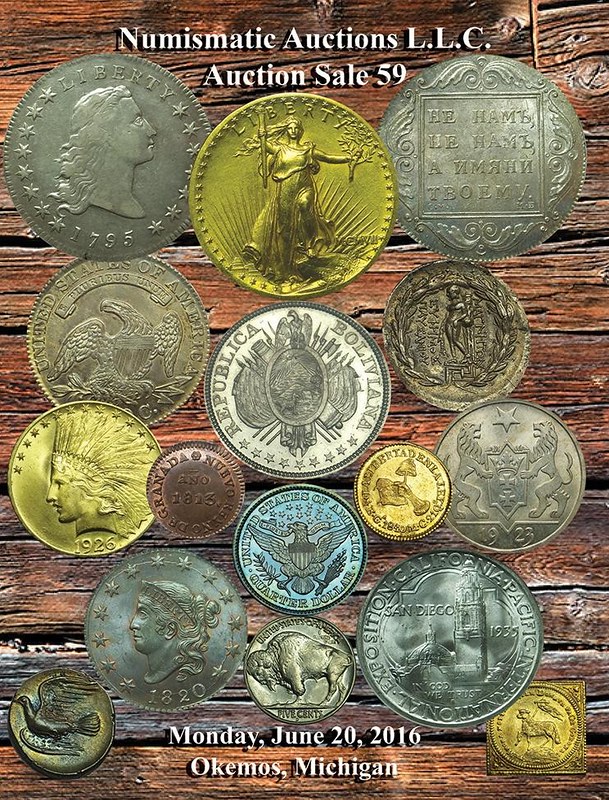
1970-S QUARTER STRUCK ON 1941 CANADA QUARTER
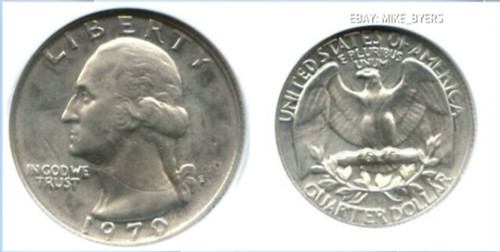
With tongue firmly in cheek I replied, "Well, it is quite rare - how many coins do you know with an obverse larger than the reverse?"
The story is based on an eBay offering of a rare error, and it managed to go viral this week. Dave Bowers forwarded a version of the story found by Lee Bowers on MSN, and Dick Hanscom sent a version found at the Daily Mail. -Editor
To read the complete article, see:
This Quarter May Be Worth Much More Than You Think
(www.yahoo.com/news/quarter-may-worth-much-more-175047736.html)
CLAIM: A handful of 1970s quarters are worth a fortune, as they were minted on the back of a 1941 Canadian coin.
MIXTURE
WHAT'S TRUE: A 1970-s proof quarter struck on the back of a 1941 Canadian coin was listed on eBay for $35,000.
WHAT'S FALSE: The coin did not enter circulation.
EXAMPLE: [Collected via e-mail, June 2016]
I read that old 1970 quarters are worth thousands now because they have a small 1941 number above the word Liberty on the back. Supposedly it's from Canadian quarters that were reused as American ones.
ORIGIN:An article published on Woman's World on 31 May 2016 described a rare U.S. quarter from 1970 that was purportedly minted by accident on the back of a Canadian coin:
We all have loose change sitting around, despite our promises to ourselves to roll 'em and bring 'em to the bank--or at least deposit them in one of those sorting machines. And while it's no surprise that many 200-year-old coins are worth more than the standard value, some 1970 quarters could be worth far more than 25 cents.
How much more? How about a yearly salary's worth!
The article quoted above is based on an eBay listing for a "1970-S Proof Washington Quarter Struck on 1941 Canada Quarter NGC PF 65." The coin is currently listed by Mike Byers, Inc. for USD$35,000.
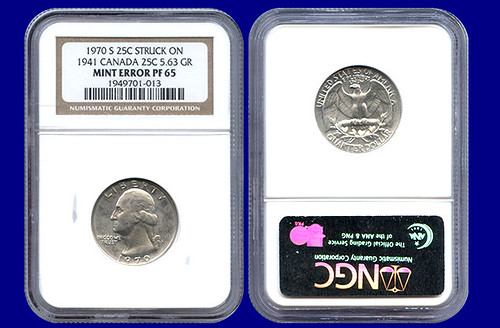
According to the eBay listing, Byers obtained this rare coin from a California state auction:
This unique 1970-S Proof Quarter from the United States was over struck on a 1941 Quarter from Canada. This mint error was originally discovered in group of San Francisco Proof Errors that was auctioned by the State of California. There is a significant amount of detail on both sides showing the design of the Canadian Quarter. This is one of the most fascinating and intriguing proof mint errors ever discovered.
While Byers has a long history of buying and selling mint error coins, many appeared skeptical about this eBay listing, largely because there seems to be no practical reason that a 1970 United States quarter would be minted in the same place as a 1941 Canada quarter. While third-party coin certification company Numismatic Guaranty Corporation couldn't provide the reason the coin was created, they did confirm to us that it was legitimate
Lee Bowers noted:
It's a "Fun reason for non-collectors to start checking their change for that "needle in the haystack". A great "coin collecting awareness" story for the general public.
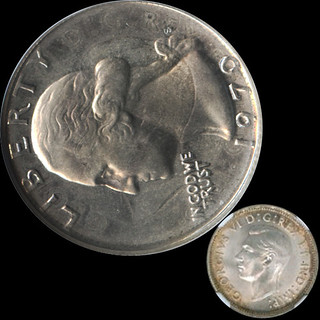
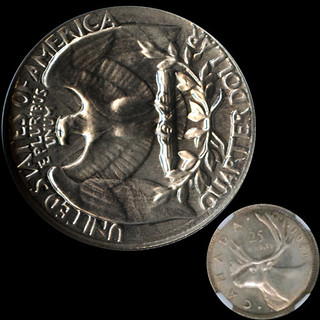
To read the complete Snopes article, see:
Coinstruck (www.snopes.com/1970-quarter-ebay-canada/)
To read the complete MSN article, see: Rare batch of 1970 quarters worth much more than 25 cents (www.msn.com/en-us/money/markets/rare-batch-of-1970-quarters-worth-much-more-than-25-cents/ar-AAgPLg3?li=BBnb7Kz)
To read the complete Daily Mail article, see: Is your quarter worth $35,000? Rare 1970 proof coin containing faint trace of the year '1941' goes on sale... but you'll need to be very 'eagle'-eyed to spot minting error (www.dailymail.co.uk/news/article-3633476/Is-quarter-worth-35-000-Rare-1970-proof-coin-containing-faint-trace-year-1941-goes-sale.html)
To read the complete eBay description, see:
1970-S Proof
Washington Quarter Struck on 1941 Canada Quarter NGC PF 65
(www.ebay.com/itm/1970-S-Proof-Washington-Quarter-Struck-on-1941-Canada-Quarter-NGC-PF-65-/272270412047?)
CLANDESTINE STRIKE: 1970-S PROOF QUARTER ERROR
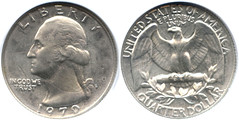 Security at the U.S. Mint coining facilities is tight. Every so often we see an example that demonstrates it is not tight enough.
Security at the U.S. Mint coining facilities is tight. Every so often we see an example that demonstrates it is not tight enough.
A Proof-65 1970-S quarter has been posted as a Buy It Now item on eBay for $35,000.
The price is making headlines and generating interest among collectors.
The reason the asking price is so high is it is struck on a silver 1941 Canadian 25-cent piece.
It is a major wrong planchet error.
In this case it appears that an employee 46 years ago did wrong and was never caught.
This clandestine strike was not part of normal Mint production. There is no way that a Canadian quarter of 1941 could have found its way to a San Francisco coin press striking proofs without help.
It had to be deliberately made.
This would require a Canadian quarter to be smuggled in. It was then overstruck and smuggled out. Or, I suppose, proof dies could have somehow been smuggled out, for use elsewhere, but that seems less likely.
Now this is no reflection on the current seller, Mike Byers has done everything above board. He is a respected error expert and dealer in the United States.
He also provides information that would make any potential buyer sleep well at night.
In the description Byers notes that the “error” was part of a small group of proof errors that were part of a collection. The Secret Service looked at the collection and released it back to the State of California for auction.
A buyer would have a coin that seems to be absolutely clean going forward despite what appears to be murky origins. In fact, the likelihood of funny business probably enhances its value.
Is it worth $35,000?
We’ll have to wait and see.
To read the complete article, see:
Are you a buyer at $35,000?
(www.numismaticnews.net/buzz/are-you-a-buyer-at-35000)

Archives International Auctions, Part XXXIII
Chinese, Asian & Worldwide Banknotes,
and Chinese Scripophily
June 28, 2016
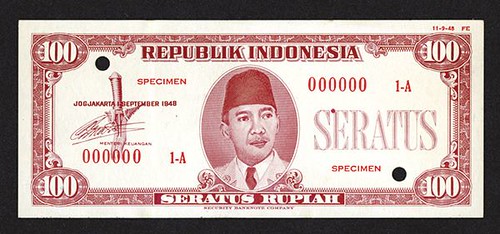
Click the links! Highlights include:
Lot 198: American-Oriental Banking Corporation, 1919 “Shanghai Branch”
Lot 245: Dah Chon Chang Money Exchange, ca.1920's "Shanghai"
Lot 315: Republik Indonesia Unlisted 1948 Issue Essay Specimen
Lot 451: Banco de Portugal - Azores. 1909 Issue
Lot 475: Imperial Do Brazil (1882) Issue Color Trial Essay Proof
Lot 700: Comite Bancario de Guatemala. 1899 Issue
Lot 889: Bank of Rhodesia & Nyasaland. 1960 Issue.
Lot 1006: Central Bank of Turkey. 1930 Law Issue
View the Virtual Catalog
Download the Catalog in PDF format
ARCHIVES INTERNATIONAL AUCTIONS, LLC
1580 Lemoine Avenue, Suite #7
Fort Lee, NJ 07024
Phone: 201-944-4800
Email: info@archivesinternational.com
WWW.ARCHIVESINTERNATIONAL.COM
1942 EXPERIMENTAL CENT OFFERED
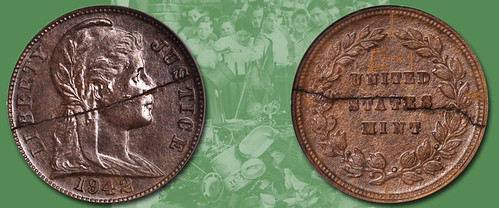
The years during and surrounding World War II were an era of inventiveness and ingenuity among manufacturers in the United States, the result of shortages that threatened the availability of previously abundant raw materials. The Mint was not spared from this rationing, and in 1942 it began a search for materials to substitute for copper in the Lincoln cent, as copper was among the most valuable metals to the wartime effort. Independent manufacturers submitted samples of proposed substitutes, which included various metal alloys, plastics and even glass.
Though the Mint ultimately decided to utilize zinc-coated steel for the 1943 cents, durability testing performed on plastic samples by the National Bureau of Standards (NSB) allowed insight as to how some of these materials might have performed if they had been chosen. It is one of these plastic pieces, Judd-2062, Pollock-4045, that will be featured in our August 2016 Official Auction of the ANA World's Fair of Money in Anaheim.
Called "reddish brown plastic" by Pollock, variegated cinnamon and deep mahogany hues paint each side of this experimental cent. Though the pulp filler delivers a lightly fibrous texture, the piece remains glossy overall. The previously severed halves have been neatly united, with just the faintest traces of glue residue visible under magnification. Calculated marks are spotted at 12, 3, 6 and 9 o'clock on the reverse—likely positioning marks from the NSB tests--and the characters E-1 are engraved in the upper field.
As quoted by Roger Burdette in United States Pattern & Experimental Pieces of WW-II (2012), the NSB report presented to the Bureau of the Mint on December 22, 1942 notes that specimens provided by Durez Plastics and Chemicals, Inc. were given the sample designation E, alluding to the provenance of the present example. The same report outlines an Impact Strength Test in Table 9 that evaluates a specimen "1" from sample E, employing an Izod-style test that strikes specimens until fracture. Without much imagination, it could be suggested that the present "E-1" example was severed in this U.S. Government-regulated evaluation. Burdette also plates this piece on page 171 in the aforementioned work where he notes that 50 to 100 samples of the RB 42-57 type were sent to the Mint, and at least a dozen were provided to NBS for testing.
To read the complete article, see:
Intriguing 1942 Experimental Cent to be offered in our August
2016 Official Auction of the ANA World’s Fair of Money in Anaheim (www.stacksbowers.com/News/Pages/Blogs.aspx?ArticleID=2127)

LYN KNIGHT JUNE 2016 AUCTION SALE HIGHLIGHTS
While the Live sessions are robust throughout, areas of particular strength include Algeria, Austria, Colombia, France, Germany, Honduras, Hungary, India, Iran, Russia, Scotland, Spain, and Venezuela. Honduras includes a type never previously offered publicly; two incredible notes from Switzerland must be mentioned. Lots can be viewed and bids made at lynknight.com. The auction schedule is as follows:
Memphis Knight Live auction schedule
- Session 1 Tuesday, June 14 at 10 AM (Central Time) World Notes: Afghanistan thru Denmark
- Session 2 Tuesday, June 14 at 5 PM (Central Time) World Notes: Djibouti thru Honduras
- Session 3 Wednesday, June 15 at 10 AM (Central Time) World Notes: Hungary thru Philippines
- Session 4 Wednesday, June 15 at 5 PM (Central Time) World Notes: Portugal thru Miscellaneous Countries
- Session 5 Thursday, June 16 at 10 AM (Central Time) US: Large Size Type, Fractionals, Nationals
- Session 6 Thursday, June 16 at 5 PM (Central Time) US: Obsolete, Confederate, Colonial, Continental, Depression Scrip, MPC, Panic Scrip, Vignettes, Checks, Stamps, Miscellaneous
- Session 7 Friday, June 17 at 10 AM (Central Time) US: Errors & Small Size Type
Lot 3090: Austria 96 50 Schilling 2.1.1929
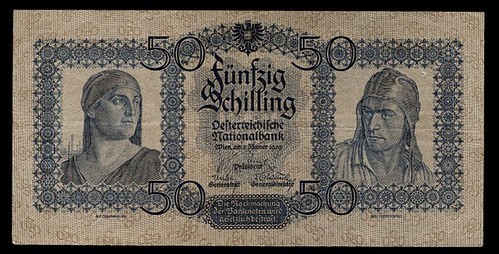
To read the complete lot description, see:
96 50 Schilling 2.1.1929
(www.lynknight.com/ShowAuctionDetails.Asp?auction_Id=270056)
Lot 3106: Bahamas 14a 10 Shillings ND (1953)
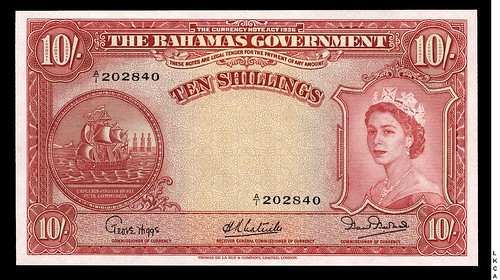
To read the complete lot description, see:
14a 10 Shillings ND (1953)
(www.lynknight.com/ShowAuctionDetails.Asp?auction_Id=269804)
Lot 3283: Colombia 164 1 Peso 6.10.1885
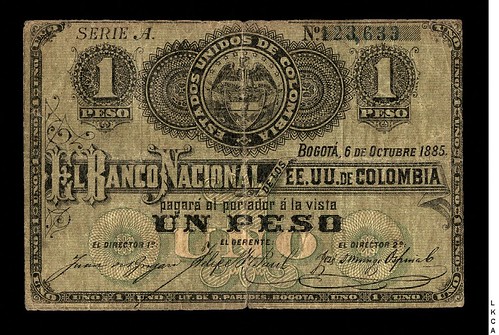
To read the complete lot description, see:
164 1 Peso 6.10.1885
(www.lynknight.com/ShowAuctionDetails.Asp?auction_Id=269211)
Lot 3359: East Caribbean States d1 100 Dollars ND (1988-93)
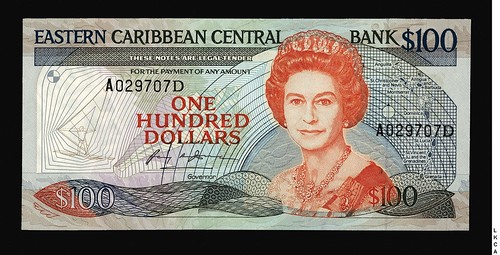
To read the complete lot description, see:
25d1 100 Dollars ND (1988-93)
(www.lynknight.com/ShowAuctionDetails.Asp?auction_Id=268950)
Lot 3539: French India 7s?/J 13.5.4 50 Roupies ND (1936)
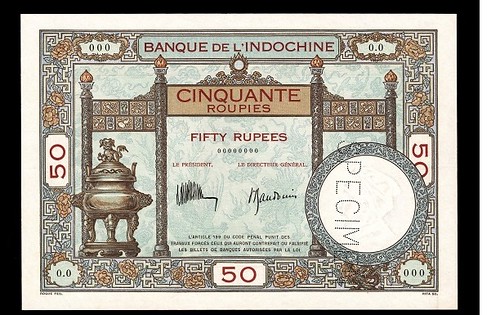
To read the complete lot description, see:
7s?/J 13.5.4 50 Roupies ND (1936)
(www.lynknight.com/ShowAuctionDetails.Asp?auction_Id=269672)
Lot 3718: Honduras NL 1 Peso 20.4.1880
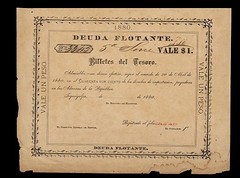
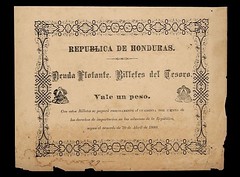
To read the complete lot description, see:
NL 1 Peso 20.4.1880
(www.lynknight.com/ShowAuctionDetails.Asp?auction_Id=270813)
Lot 3759: India 47f/J 6.9.3.1 1000 Rupees ND
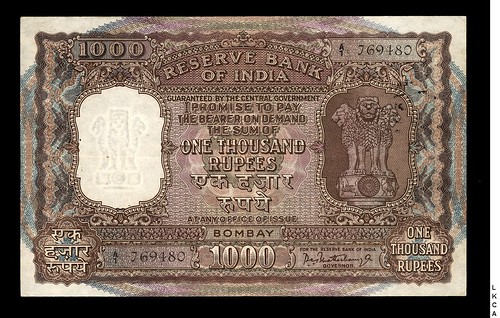
To read the complete lot description, see:
47f/J 6.9.3.1 1000 Rupees ND
(www.lynknight.com/ShowAuctionDetails.Asp?auction_Id=270365)
Lot 3770: Iran 7? 50 Tomans ND (ca. 1890-1923)
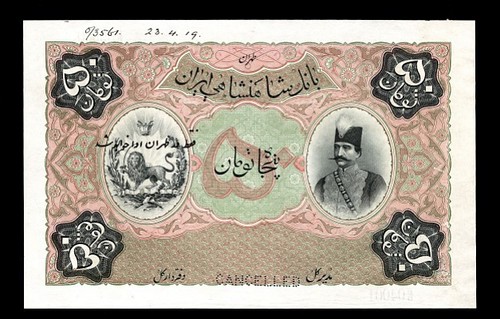
To read the complete lot description, see:
7? 50 Tomans ND (ca. 1890-1923)
(www.lynknight.com/ShowAuctionDetails.Asp?auction_Id=269327)
Lot 3936: Madagascar 49b? 5000 Francs 00-00-0000
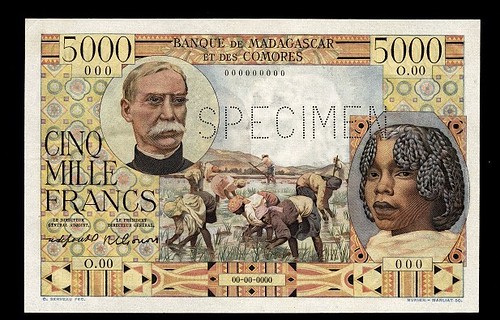
To read the complete lot description, see:
49b? 5000 Francs 00-00-0000
(www.lynknight.com/ShowAuctionDetails.Asp?auction_Id=269671)
Lot 4242: Scotland 259d 5 Pounds 1.12.1955
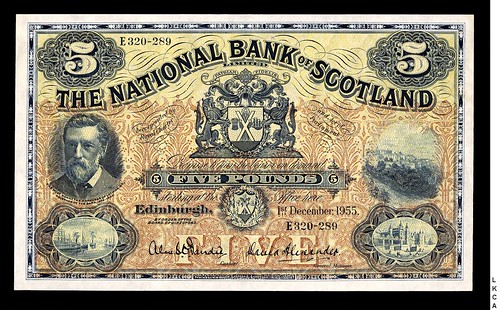
To read the complete lot description, see:
259d 5 Pounds 1.12.1955
(www.lynknight.com/ShowAuctionDetails.Asp?auction_Id=266418)
Lot 4354: Switzerland 23? 25 Franken 9.9.1914
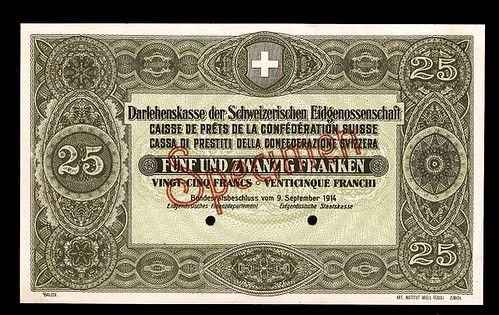
To read the complete lot description, see:
23? 25 Franken 9.9.1914
(www.lynknight.com/ShowAuctionDetails.Asp?auction_Id=269679)
Lot 4391: Upper Senegal & Niger 1a .50 Franc D. 11.2.1917
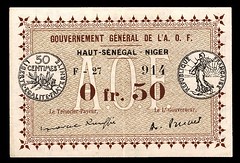
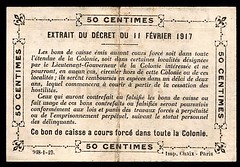
To read the complete lot description, see:
1a .50 Franc D. 11.2.1917
(www.lynknight.com/ShowAuctionDetails.Asp?auction_Id=266496)
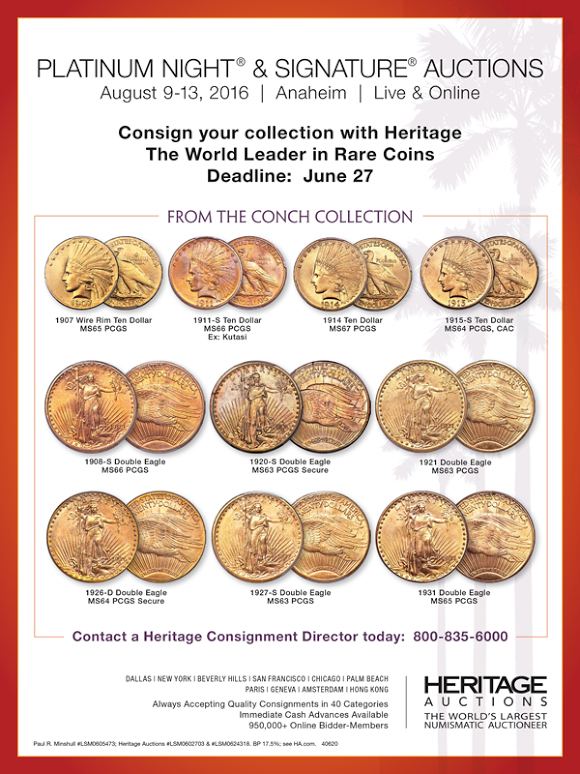
FIND IN ISRAEL MAY INCLUDE EARLY COIN COLLECTION
A treasure trove of 2,150-year-old silver coins excavated in the central Israeli city of Modiin apparently belonged to a Jew who had to leave the nearby house but never managed to retrieve his hidden cache.
Excavation director Abraham Tendler said the shekels and half-shekels (tetradrachms and didrachms) were minted in the city of Tyre, now part of Lebanon, and bear the images of the king, Antiochus VII, and his brother Demetrius II.
The finds, discovered prior to the building of a new neighborhood in the city, will be displayed in an archaeological park in the heart of that neighborhood, the Antiquities Authority confirmed.
The discovery of the silver coins provided “compelling evidence that one of the members of the estate who had saved his income for months needed to leave the house for some unknown reason. He buried his money in the hope of coming back and collecting it, but was apparently unfortunate and never returned. It is exciting to think that the coin hoard was waiting here 2,140 years until we exposed it.”
Dr. Donald Tzvi Ariel, head of the Coin Department at the antiquities authority, said the cache contained one or two coins from every year between 135 and 126 BCE.
“It seems that some thought went into collecting the coins, and it is possible that the person who buried the cache was a coin collector. He acted in just the same way as stamp and coin collectors manage collections today,” he added.
Numerous bronze coins minted by the Hasmonean kings were also discovered in the excavation in addition to the 16 silver ones, the authority reported.
They bear the names of kings such as Yehohanan, Judah, Jonathan or Mattathias and his title: High Priest and Head of the Council of the Jews.
To read the complete article, see:
Cache of Hasmonean-era silver coins
uncovered in Modiin (www.timesofisrael.com/cache-of-hasmonean-era-silver-coins-uncovered-in-modiin/)
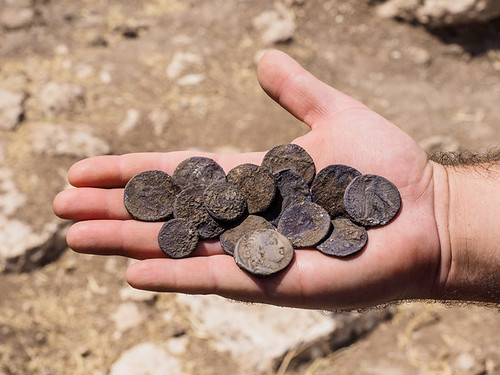
To read the complete article, see:
Rare Coins from Chashmona’im Period Found in
Modi’in Excavation (http://hamodia.com/2016/06/07/rare-coins-chashmonaim-period-found-modiin-excavation/)

THE TYNEMOUTH EXTENSION MEDAL
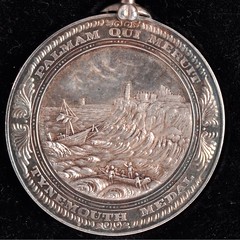 A rare medal presented to an extraordinary life-saver more than 90 years ago is going under the hammer.
A rare medal presented to an extraordinary life-saver more than 90 years ago is going under the hammer.
Charles Alfred Hill Porter was just 18 when he was awarded the Tynemouth Extension Medal for his bravery when he rescued a girl of around the same age from the sea at Tynemouth in 1922. As well as his life-saving exploits, Charles, from Wolsingham, County Durham, was a keen Himalayan mountain climber and was one of the first Englishmen to climb Mont Blanc, without oxygen or a mountain guide.
His daughter, Helen Holmes, from Rothbury, Northumberland, said: “He was a young man and he didn’t think he’d done anything untoward. As a character, he was very self-effacing."
His medal is being auctioned as part of the Anderson & Garland Fine Art Sale on June 14 and 15. The medal is dated 11th August 1922 and inscribed ‘Palmam Qui Meruit’ around a view of King Edward’s Bay, Tynemouth, with a blue ribbon and hanging bar. It is in its original box.
One hundred silver Tynemouth medals were originally made at the request of New York lawyer, EB Convers after he witnessed a rescue in Tynemouth. He was so impressed with the heroism commissioned 100 silver medals to be awarded to people saving lives on Tyneside and Tynesiders saving lives elsewhere.
Once they had all been presented, the ‘Extension’ medals were created.
The medal has an estimated value of £400 although Tynemouth medals have sold for more than £1,000 in the past.

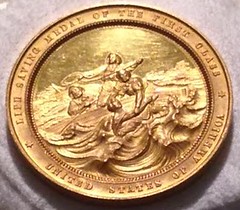
The Tynemouth and Paquet Lifesaving Medals
To read the complete article, see:
Rare Tynemouth
life-saving medal is going under the hammer
(http://www.itv.com/news/tyne-tees/2016-06-08/rare-tynemouth-life-saving-medal-is-going-under-the-hammer/)
To read the earlier E-Sylum articles, see:
GOLD LIFESAVING MEDAL OF THE FIRST CLASS
(www.coinbooks.org/esylum_v19n19a13.html)
MORE ON THE GOLD LIFESAVING MEDAL OF THE FIRST CLASS
(www.coinbooks.org/esylum_v19n20a18.html)
THE BOOK BAZARRE
THE NEW ZEALAND GALLANTRY STAR MEDAL
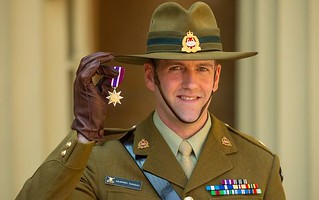 A New Zealand army major has received a rarely-given award for bravery from Prince Charles at Buckingham Palace.
A New Zealand army major has received a rarely-given award for bravery from Prince Charles at Buckingham Palace.
Major Geoffrey Faraday, of the Royal New Zealand Armoured Corps, is just the third person to receive the New Zealand Gallantry Star.
He was working in South Sudan as a military liaison officer for the United Nations in April 2014 when an armed mob approached a UN-protected refugee camp with 5000 people.
Major Faraday faced down the gang of about 250 when it breached the camp perimeter and began to attack the occupants with rifles and machetes.
The attack left 53 civilians dead.
Major Faraday was also recognised for fending off an attack on three barges carrying food and fuel for the same UN mission.
To read the complete article, see:
Rare medal for bravery awarded to NZ
major (www.radionz.co.nz/news/national/306133/rare-medal-for-bravery-awarded-to-nz-major)
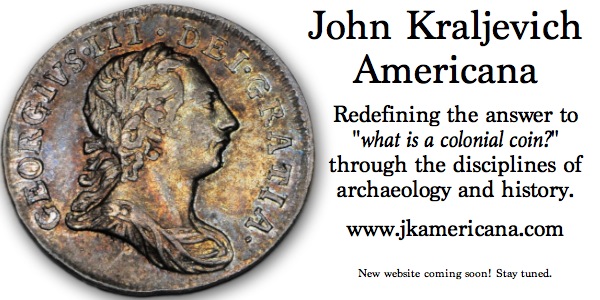
THE FIRST VICTORIA CROSS AWARDED TO A MUSLIM
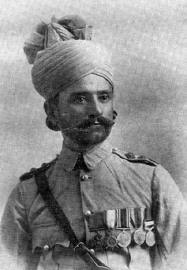 As my collection of Victoria Crosses (VCs) nears the 200 mark, I am delighted to reveal that I have become the custodian of a particularly
special medal group.
As my collection of Victoria Crosses (VCs) nears the 200 mark, I am delighted to reveal that I have become the custodian of a particularly
special medal group.
I have purchased the gallantry and service medals that were awarded to Subadar (equivalent to a captain) Khudadad Khan. He was the very first Muslim to be awarded Britain and the Commonwealth’s most prestigious decoration for bravery and his medal group will soon go on public display at the Imperial War Museum, London.
Khan, who was also the first Indian soldier to be awarded the VC, was awarded his decoration when, while serving as a sepoy (equivalent to a private), he displayed exceptional gallantry in battle early in the First World War.
In a world in which a tiny minority of Muslims – notably those fighting for ISIS and those extremists responsible for terrorists acts around the world – tarnish their religion, this is a wonderful time for us to recognise the many, many loyal and brave Muslims who have risked, and sometimes given, their lives for Britain, its allies and for wider freedoms.
Make no mistake, Muslims made an immense contribution to the Allied effort during the Great War, and beyond. Of the 1.3 million Indians who volunteered to serve the Empire during the 1914-18 global conflict, approximately 400,000 were Muslims.
Khan had been born on October 26 1888 in Jhelum, Punjab, India (now Pakistan). He had enlisted as a sepoy in the 129th Duke of Connaught’s Own Baluchis, Indian Army, on August 3 1914 at a time when the regiment was recruiting on the North-West Frontier.
Initially, Khan had been sent to the Suez Canal Zone but he was then diverted to France because of the desperate need for more troops. On October 18 1914, he moved with the Ferozepore Brigade from Orleans, France, to be attached to the British Cavalry Corps that was attempting to hold the line between Zandvoorde and Ploegsteert Wood, Belgium. On 22 October, his regiment joined the 3rd Cavalry Brigade.
As the battle raged on October 31, Khan shrugged off his serious injuries and continued to work his gun as German shells reined down on the six men. One by one, Havildar Ghulam Mahomed, Sepoy Lal Sher, Sepoy Said Ahmed, Sepoy Kassib and Sepoy Afsar Khan were killed by enemy fire.
Before his position was finally overrun by the Germans, Khan put the machine-gun out of action so that the much-prized weapon did not fall into enemy hands. As the enemy advanced, he initially feigned death but he eventually crawled back to rejoin his company and receive medical assistance.
Khan’s VC was announced in the London Gazette on December 7 1914 and he received his decoration under the terms of the Royal Warrant of 1911, which extended the reward to native troops. Previously Indians who showed exceptional gallantry received the Indian Order of Merit (First Class). The other five men manning the second machine-gun on October 31 received a different but lesser posthumous gallantry award.
Initially, Khan was too weak to attend his planned investiture but he eventually received his VC from King George V at Buckingham Palace on January 26, 1915.
To read the complete article, see:
Lord Ashcroft: Why I feel so privileged to take possession of the first Victoria Cross awarded to a Muslim
(www.conservativehome.com/platform/2016/06/lord-ashcroft-why-i-feel-so-privileged-to-take-possession-of-the-first-vc-awarded-to-a-muslim.html)

HARPERS FERRY QUARTER LAUNCHED
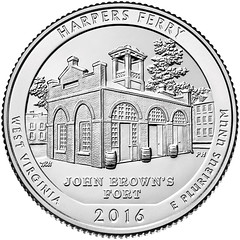 The United States Mint (Mint) joined the National Park Service (NPS) today to officially launch the America the Beautiful Quarters® Program
coin honoring Harpers Ferry National Historical Park.
The United States Mint (Mint) joined the National Park Service (NPS) today to officially launch the America the Beautiful Quarters® Program
coin honoring Harpers Ferry National Historical Park.
The coin's reverse design features John Brown's Fort, the site of John Brown's last stand during his raid on the Harpers Ferry Armory.
"This new coin serves as a reminder that at a river-crossing established long before our country's struggle for independence, in a West Virginia town that played an integral role in our nation's Civil War, a diverse number of people and events came together to influence the course of our common history," said William Norton, United States Mint Director of Legislative and Intergovernmental Affairs.
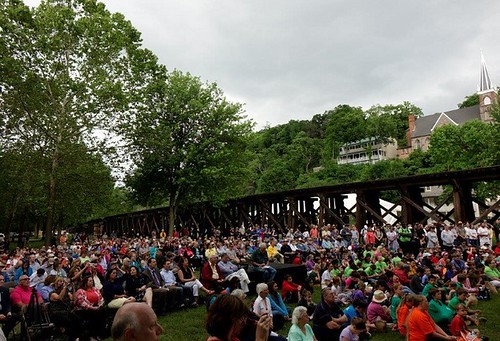
Crowdshot from Mint New Blog
Basketball Olympic Gold Medalist Vicky Bullett served as master of ceremonies for the event held at Lower Town located within the site. Additional participants included United States Mint Artistic Infusion Program designer Thomas Hipschen, the coin's designer; NPS Regional Director Bob Vogel; Harpers Ferry National Historical Park Superintendent Rebecca Harriett; Keith McIntosh on behalf of U.S. Senator Joe Manchin III; Chris Strovel on behalf of U.S. Senator Shelley Moore Capito; and Dr. Steve Smoot on behalf of U.S. Representative Alex Mooney.
The ceremony culminated in the Mint's customary coin exchange in which the public traded their cash for $10 rolls of newly minted Harpers Ferry National Historical Park quarters. The Mint also hosted a coin forum the evening before the launch ceremony, where local residents gathered to express their views about future coinage and learn about upcoming Mint coin programs and initiatives.
Pat McBride and Tom Uram of the Pennsylvania Association of Numismatists drove down for the day. Here are some photos they shared; "we were taking pictures like a bunch of Japanese tourists..." -Editor
Eric Schena writes:
I went to the forum the Mint held the day before the launch. They had set up a tent on the green adjacent to Shenandoah Ave. in the lower part of the town. I would hazard a guess somewhere between 75 and 100 folks showed up, which is not bad at all for a Tuesday evening.
The Mint's legislative director, Bill Norton, answered many of the audience members' questions regarding future possible coin series, the fate (if any) of the one cent coin, and what is role is as essentially the Mint's liaison to Congress. A native of Paw Paw, WV, he made mention of other design candidates, to include Seneca Rocks and New River, but was pleased that Harper's Ferry was ultimately selected by the CCAC.
The first 10 minutes or so were interrupted by a CSX coal train rumbling through - there is an active railroad line that runs right through the lower town - and he was amused by that. All in all, it was a worthwhile experience and I am glad I made that detour on my way home from work.
Pat writes:
The pre-evening was a Q&A only by Bill Norton. No Coin sales. The launch day sales were rolls (10 roll limit) and the 2 coin (P&D Mints) sets in the trifold, no bags as was reported earlier.
There were 400 kids in attendance. The overall crowd was reported by many to be the largest of any of the previous launch ceremonies.
The day started out beautiful. There was a slight interruption when a train came through. Then next was a drenching rainfall that lasted about 20 minutes then blue skies and sunshine as the program moved to the release phase.
Tom Uram (a member of the Citizen's Coinage Advisory Committee) writes:
A beautiful part of the country. I picked up some of the history lessons that I missed in school. It was also great to see the enthusiasm for the new quarter. Also great to see Tom Hipschen, the designer. Obviously when we at CCAC review the designs we have no idea of who the artists are; it's great to see them after the process.
Many people commented that this was one of the largest attended quarter launch ceremonies. It was also great to see how many young people attended. It was a great day of programs and entertainment provided by the National Park Service as well as the United States Mint.
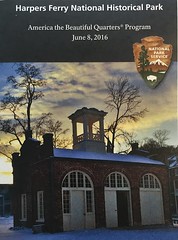
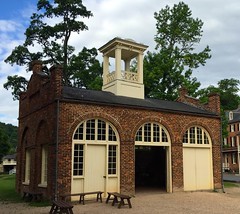
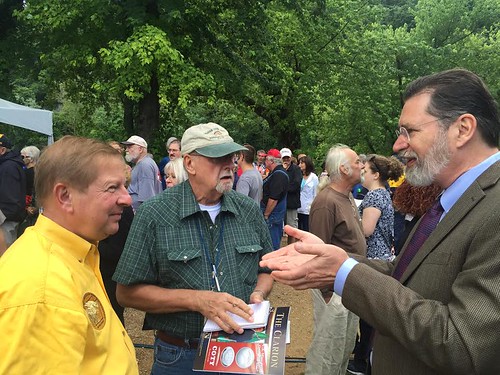
Tom Uram and Tom Hipschen
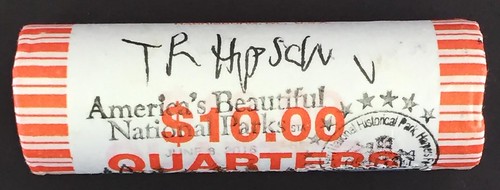
Roll of Harpers Ferry Quarters signed by Tom Hipschen
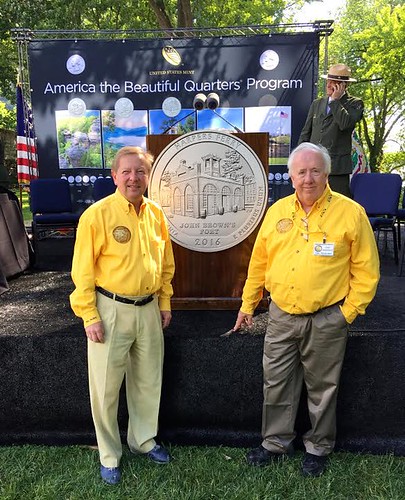
Tom Uram and Pat McBride Wearing their Gold PAN Shirts
To read the complete press release, see:
United States Mint Launches New Quarter Honoring Harpers Ferry
National Historical Park (www.usmint.gov/pressroom/?action=press_release&id=1799)
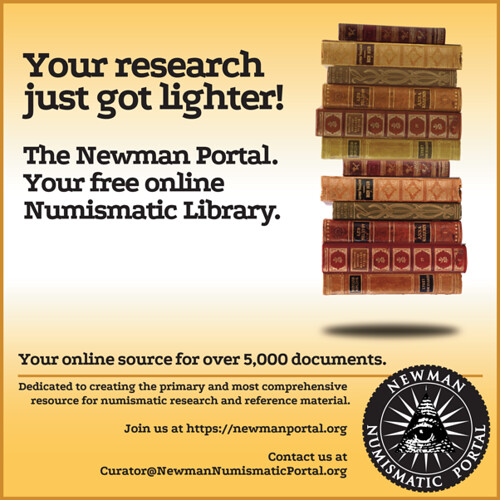
MOVIE MONEY USED IN CANTON, OHIO
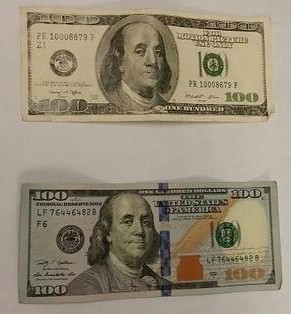 Two men accused of using counterfeit cash in an Internet scheme to dupe a couple out of a videogame system used "movie prop
money" that police believe may have come from a rap video production in Cleveland.
Two men accused of using counterfeit cash in an Internet scheme to dupe a couple out of a videogame system used "movie prop
money" that police believe may have come from a rap video production in Cleveland.
"We have been told that while the music video was being filmed, they were throwing (the fake money) out to the extras," said Lt. Roger Crihfield of the Canton Police Department's detective bureau. "Somehow it made its way here."
Store clerks can easily tell the difference, he said. The "bills" are slick, magazine-like paper that, while they appear real, include the words "For Motion Picture Use Only" on the front at the right top and, on the back, at the top-center where the words "The United States of America" are printed. Above the 100 on the bottom left are also the words: "This note is not legal. It is to be used for motion pictures." And on the back, where a genuine $100 says, "In God we trust," the fake one says, "in him we trust."
The fake money has been showing up in the Canton area at local businesses where "customers" purchase a small item with what appears to be a large-denomination bill. "They buy a small item or two in hopes of getting the rest back in change and genuine currency," Crihfield said.
Nothing about the money two men showed a couple selling a videogame system was real.
The 25-year-old woman and 24-year-old man, who both live on Roe Court SE, met with a couple of young men on May 2 after the men responded to the couple's ad on LetGo, a social media app.
Crihfield said the two men showed the couple four $50 bills and two $100s, all movie prop money.
To read the complete article, see:
Fake movie money shows up in Canton
(www.cantonrep.com/article/20160606/NEWS/160609595)
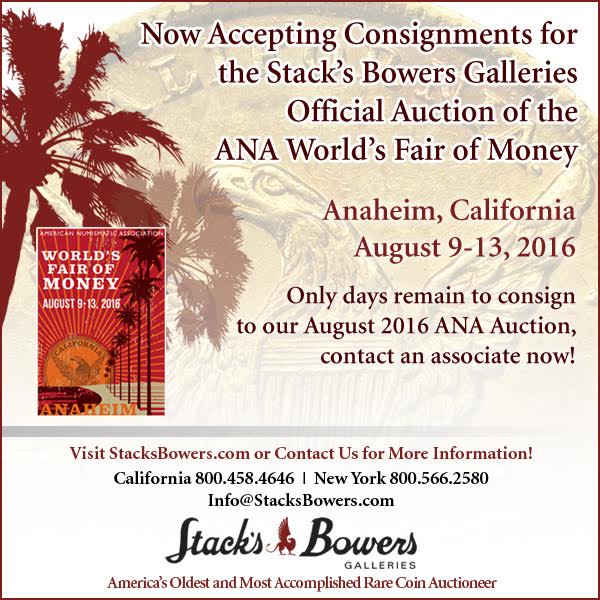
BANK OF ENGLAND UNVEILS NEW CHURCHILL NOTE
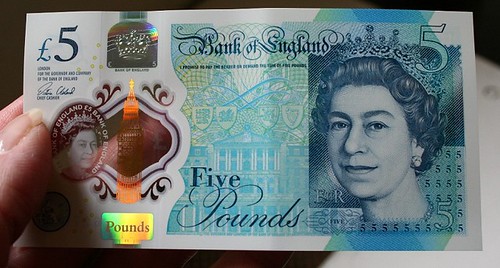
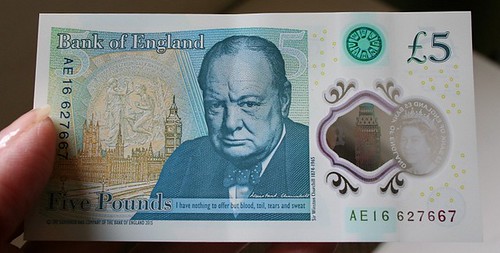
On June 2, the Bank of England officially unveiled its first-ever polymer bank note; it is also the first bank note to feature a portrait of Sir Winston Churchill, renowned politician, artist, Nobel Prize winner, and Prime Minister of Great Britain during the Second World War. Churchill was credited with bolstering the hopes and spirits of the British people in the face of what seemed a possible victory for Hitler and the Nazis in the initial months of fighting in Europe.
The setting for today’s event was Blenheim Palace, the traditional seat of the Dukes of Marlborough since the 1700’s and the birthplace of Winston Churchill, a descendant of this illustrious family. Blenheim is a spectacular palace that is currently one of Great Britain’s most visited tourist attractions. Still a functioning private residence, Blenheim’s breath-taking grounds are carefully manicured, and the state rooms are as fine as anything seen in the most luxurious and opulent estates.
Invited guests and the media were brought to the Marlborough Room in the Orangery of Blenheim for the ceremony, which was opened by Lord Nicholas Soames, Grandson of Sir Winston. He spoke of the history of Blenheim, the origins of which started with the first Duke of Marlborough, whose allegiance to Queen Anne earned his family a reward for their continued service: the county in which Blenheim is located, along with funds to build a stately home.
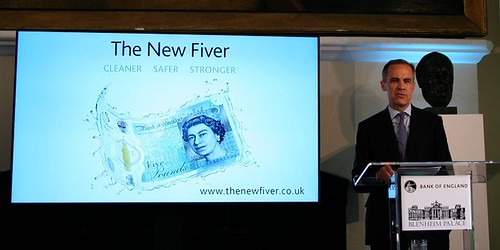
The presentation was then hosted by the current and 9th Duke of Marlborough, who took the opportunity to introduce Governor Mark Carney. Governor Carney joined the Bank of England in July 2013, and opened with comments on the new polymer bank note, which will be introduced into circulation later this year. The governor spoke of the importance of Churchill as a symbol of the nation, commenting that he’d once been duly voted the greatest Briton of all time by public poll.
This was not the first time the Carney had officiated in the unveiling of a new Bank of England note; during his early weeks as governor he announced that 19th-century author Jane Austen would be featured on the upcoming £10 note.
Governor Carney has taken a special interest in Bank of England bank notes. It is said he has spearheaded the transition of the notes from paper to polymer, a move similar to one he made while Governor of the Bank of Canada.
With the unveiling concluded, the assembled guests, family, and the media were shown the Bank of England’s display and user-friendly presentation of the new bank note. This took place adjacent to the Marlborough Room with about a dozen Bank of England employees from various departments holding the new £5 notes in hand, ready to show them off.
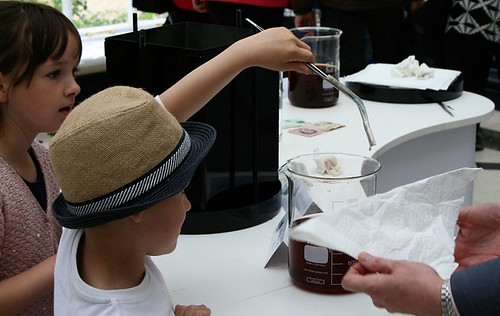
Invited guests weren’t the only ones treated to this special display. Lucky members of the public visiting Blenheim got a chance to comment on the polymer note and take part in demonstrations showing its durability when confronted by liquid or rough handling. Included in the audience of onlookers was the Duke of Marlborough, who enthusiastically posed for photos with visitors and the new note, to the delight of many at Blenheim.
The new note is 15% smaller than the current note in circulation. Representatives also confirmed the £10 Austen note and the Turner £20 note will be issued by 2020 and will be decreased in size to accommodate the new dimension of the £5 Churchill note.
The note will enter circulation on September 13, 2016. The Bank of England has announced that the current “Elizabeth Fry” note will remain in circulation until May 2017 and can be redeemed at Bank of England offices until then. For more information on the new Churchill £5 note, as well Bank of England notes presently in circulation, please visit the Web site of the Bank of England.
To read the complete article, see:
Bank of England Unveils Design for New
Churchill £5 Note (http://news.coinupdate.com/bank-of-england-unveils-design-for-new-churchill-5-bank-note/)

ARTICLE PROFILES POLYMER BANKNOTE INVENTOR DAVID SOLOMON
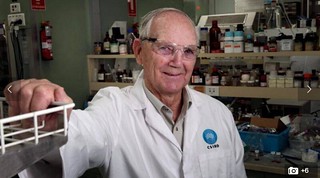 Professor David Solomon has received the top-tier Companion (AC) in the Queen's Birthday Honours list, but he only has to open his
wallet for proof of his value to science.
Professor David Solomon has received the top-tier Companion (AC) in the Queen's Birthday Honours list, but he only has to open his
wallet for proof of his value to science.
The type of plastic banknote he co-invented, first circulated in Australia 1988, has since been exported to 34 countries including Canada, Chile and Vietnam, and is soon to be released in the UK.
In 2014-15 alone, Note Printing Australia, a subsidiary of the Reserve Bank, delivered 166 million Australian banknotes and 152 million banknotes to other countries.
But Professor Solomon, 86, an honorary professorial fellow at the University of Melbourne's department of chemical and biomolecular engineering, is not the big-headed type.
Although he receives no royalties from the notes, he says "that doesn't worry me. I'm not driven by that. I was employed by CSIRO and it was my job."
Although the banknote is "a great achievement and I don't want to downplay it", he is prouder of his broader breakthrough of working out how to custom-build plastics by controlling the structure, composition and properties of polymers.
The chemistry is applicable to fields as diverse as cosmetics, computers and paint. He was admitted to the elite Royal Society in 2004 and in 2011 he and Professor Ezio Rizzardo were awarded the Prime Minister's Prize for Science.
Currently, he is working with Professor Greg Qiao, head of the university's polymer group, to develop new paints, car oils, and biomedical applications such as eye implants.
A Melbourne criminal gang's 1966 forgery of $800,000 worth of $10 bills sparked the then Reserve Bank governor, Herbert 'Nugget' Coombs, to ask senior scientists to design more secure banknotes. Professor Solomon began his work on the "secret project" at CSIRO in 1967.
He says partly because the RBA was a reluctant commercial exporter and technology leader, it wasn't until 1988 that it released the first polymer $10 notes, with clear plastic windows and holograms that deterred backyard note printing.
But Professor Solomon has advised the RBA to employ scientists to keep ahead of the forgers."I said, 'It's never going to be over'. You can't sit still. You've got to get out in front and stay there, and so that's what's happening. They employ scientists who are coming up with new and improved notes all the time."
He is "absolutely delighted" with the Order of Australia to complement his science honours, and the recognition from wider society was satisfying.
To read the complete article, see:
Queen's Birthday Honours 2016: Professor David Solomon co-inventor of plastic money gets a gong
(www.illawarramercury.com.au/story/3963463/queens-birthday-honours-2016-professor-david-solomon-co-inventor-of-plastic-money-gets-a-gong/)
COLLECTORS LINE UP FOR BANK OF THAILAND COMMEMORATIVE
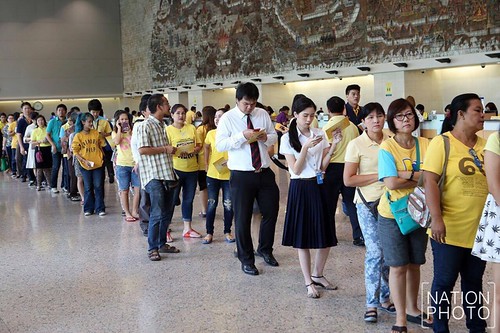
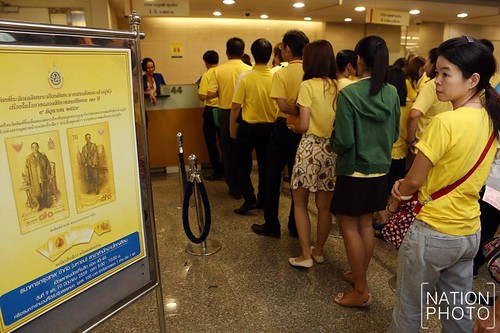
Special banknotes by the Bank of Thailand in commemoration of His Majesty the King’s 70th accession to the throne are available to the public for the first day on Thursday. The banknotes—distributed by various banks—were quickly sold out.
In Kohn Kaen province, state-run and commercial banks limited the banknote purchase to one banknote per one person. In Nan, a lot of people lined up to buy the banknotes at various banks. The banknotes—each worth 70 baht but sold at 100 baht—were sold out within one hour.
In Surin, a Government Savings Bank branch sold all of the banknotes within three minutes. Most of the other banks limits the purchase to one or two banknotes per one person.
People who bought the banknotes in Nakhon Ratchasima said they would keep the banknotes as souvenir and give them to relatives.
To read the complete articles, see:
Banknotes commemorating King's 70th
accession to throne quickly sold out (http://thainews.prd.go.th/CenterWeb/NewsEN/NewsDetail?NT01_NewsID=WNPOL5906090010021)
Commemorative Bt70
banknotes sell like hot cakes
(www.nationmultimedia.com/breakingnews/Commemorative-Bt70-banknotes-sell-like-hot-cakes-30287738.html)
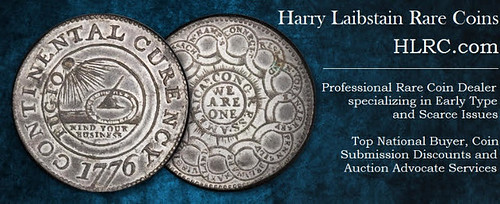
SHIRE POST MINT'S FANTASY WORLD COINS
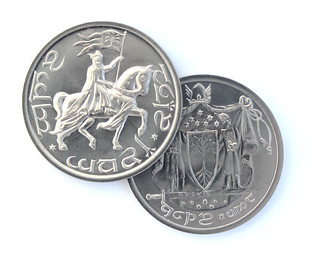 Fictional travelers fleeing Bree with wraiths hot on their heels typically can’t buy a much-needed pony with traveler’s checks and no one
ever asked someone from Bravos for help by uttering “Valar morghulis” and then flashing an American Express card.
Fictional travelers fleeing Bree with wraiths hot on their heels typically can’t buy a much-needed pony with traveler’s checks and no one
ever asked someone from Bravos for help by uttering “Valar morghulis” and then flashing an American Express card.
Those goods and services from the fantasy worlds of J.R.R. Tolkien’s The Lord of the Rings and George R.R. Martin’s Game of Thrones come at a cost, and those costs must be paid in hard coins - coins like those struck in Northwest Arkansas by Shire Post Mint, the Arkansas Democrat-Gazette reported.
Tom Maringer, the Springdale mint’s founder, is a former knife and sword maker with a passion for coin and stamp collecting. Today he has licensing agreements to make collectible coins for several top-tier fantasy franchises, including Game of Thrones and The Lord of the Rings.
Maringer sells his coins through online channels, including his own store shirepost.com, and on eBay, Etsy and Amazon, and through the HBO Store. He recently struck a deal for Shire Post Mint’s Game of Thrones coins to be sold in Barnes & Noble stores nationwide starting in June, his first foothold in a large chain store.
Maringer doesn’t classify his products as toys but he doesn’t consider them as pure collectibles either; they are something in between.
“They’re meant to be toyed with rather than put in an album or on a shelf to be looked at,” he explained.
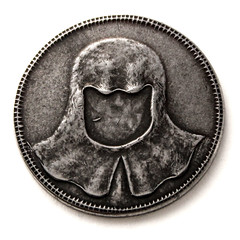
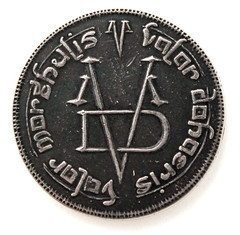
At Shire Post Mint, Maringer and his son Woody design and stamp the coins while daughter Helen helps with art and packaging development and wife Peggy keeps the books. The mint makes about 100,000 coins annually and produces more than 150 different coins, which are sold individually or in sets. The mint’s most popular item is the Iron Coin of the Faceless Man from the Game of Thrones franchise, with more than 40,000 made to date. The coin, used as a recognition signal by a cult of assassins known as Faceless Men, is made of pure metallurgical-grade iron and includes the inscriptions Valar morghulis, a password which translates to “All men must die,” and Valar dohaeris, a countersign which translates to “All men must serve.”
For Maringer, the concept for Shire Post Mint was spawned out of simple curiosity in the late 1980s. Maringer, an avid reader of fantasy, wondered what the silver pennies Frodo used to purchase Bill the pony in The Fellowship of the Ring looked like, what they felt like, what they sounded like when swished in a bag.
“It’s a bit of a pirate fantasy,” Maringer said with a smile as he dumped a bag of coins with a rattling clink onto a shop table. “This is my treasure.”
So he made some coins for himself and a few friends as an experiment to create what he calls “artifacts” of the fantasy worlds he found so fascinating. But the idea stayed a hobby, since he lacked the proper tools for coin production on any sort of scale. Then fate stepped in.
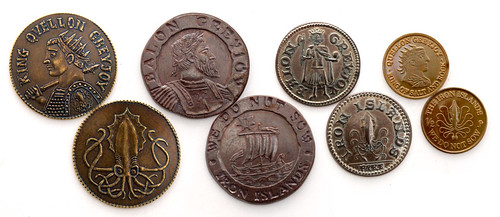
While discussing his interest in coin making with a friend in 2000, Maringer discovered the location of an antique coin press collecting dust in Ohio. Tracking down the lead, Maringer soon was in possession of a screw press that weighed more than a ton.
“This isn’t the sort of thing you find in a flea market,” Maringer said. “It was like, ‘Oh my God, this is the thing I need.’”
Still working his regular job as a knife maker, Maringer minted some of his Lord of the Rings coins and for a lark put them on a website. Within an hour he said he got messages from folks wanting to buy them. That went well, until he ran up against a problem: he wasn’t licensed to produce the coins.
“They asked me to stop, and I did,” Maringer said of officials representing the Lord of the Rings franchise.
After reading George R.R. Martin’s Song of Fire and Ice series, which included the novels Game of Thrones, Clash of Kings and Storm of Swords, Maringer wanted the licensing to make coins based on Martin’s works. He struck a deal with Martin in 2003. “He was like, ‘Yeah, let’s do it,’” Maringer said.
For years, Maringer said, Martin was his best customer, buying coins to give away to fans and on book tours. Martin’s books became more popular and then HBO came knocking to turn his books into what would become a blockbuster television series.
As the HBO series picked up steam, that’s when things really began to take off at Shire Post Mint, and more coins were minted.
Since then, Maringer went full time with the mint in 2010 and now has picked up the licensing for other prominent fantasy franchises, including Robert Jordan’s The Wheel of Time, Robert E. Howard’s Conan the Barbarian and Patrick Rothfuss’ The King Killer Chronicles, and he also obtained the licensing for The Lord of the Rings last year.
The coins are designed at the Shire Post Mint workshop and stamped out, one at a time, with what Maringer describes as 1800s technology and machinery using traditional materials. He guards his practices closely, wary of counterfeiters who copy his coins and sell the fakes online.
Maringer said his method allows fairly rapid production but it’s not like a modern minting process, where coins look too polished and too perfect. He wants each coin to look like it came from a dragon’s hoard, not the local convenience store’s till.
“There’s nothing special about that,” he said of modern minting practices. “In some ways, it’s a challenge to keep it crude.”
To read the complete article, see:
Arkansas firm makes coins
from popular fictional lands (www.washingtontimes.com/news/2016/may/29/arkansas-firm-makes-coins-from-popular-fictional-l/)
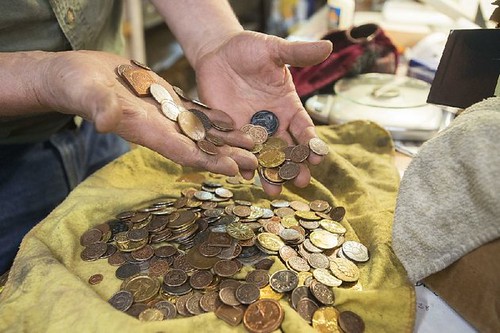
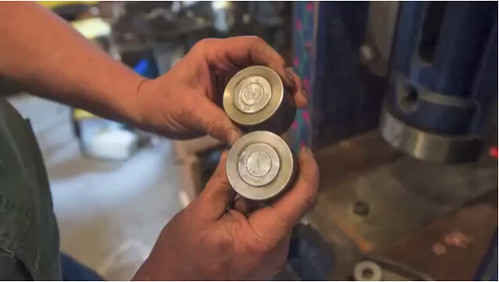
To read the complete article, see:
Arkansas firm makes coins from
'Lord of the Rings,' 'Game of Thrones' fantasy lands
(www.arkansasonline.com/news/2016/may/15/springdale-firm-makes-its-coin-on-fanta/#/)
To visit the Shire Post Mint web site, see:
www.shirepost.com
DECORATING A ROOM WITH A BOOK TSUNAMI
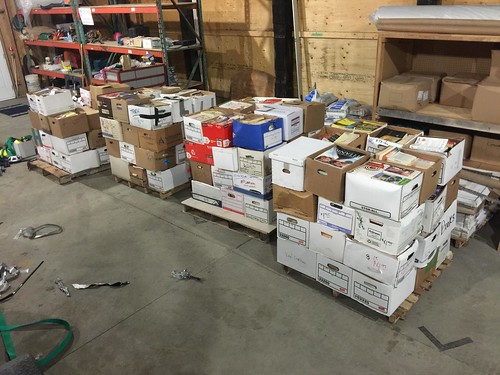
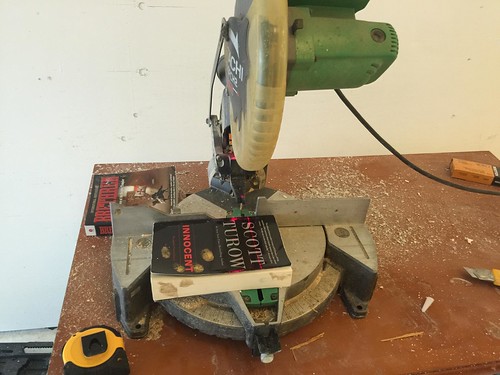
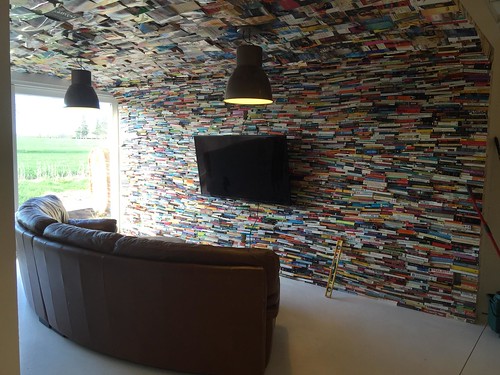
It's like a book tsunami when you're watching your soaps.
Oh! Why are you destroying books?? My heart can't take this!
On the one hand, I respect it as an intriguing artistic endeavor. On the other hand, my soul shriveled up and died.
I did the same thing except with kindles
To read the complete article, see:
I attached 4000 books to my new living room wall and ceiling. (https://imgur.com/a/CtM4k)
For more information on Books by the Foot, see:
www.booksbythefoot.com
FEATURED WEB SITE: KNIGHTS OF SAINT ELIGIUS
This week's Featured Web Site is the Saint Eligius Brotherhood of Numismatists, suggested by Tom Kays, who writes:I have been corresponding with a member of the numismatic peerage, a Dame of the Order of St Eligius. I don't recall hearing about Canadian numismatic Knights and Dames before this. Cool idea! They seem like a fun group and you can sign your name "Sir so and so K St.. E" or "Dame so and so K St. E." Do you know anyone else of the numismatic peerage? If so what can they reveal about this ancient order and the honor?
From the group's web site:
Claude Proulx, Chancellor, founded the Order first in July 1989 in Quebec City (PQ) and then across other parts of Canada, then through Europe. Claude honoured Frank Galindo bringing him into the Order, and Frank then founded the Brotherhood in the U.S. in 2009.
Claude founded the Order to create a friendly informal environment in which people of like mind can associate in pursuit of their common interest. Favoriser des relations amicales informelles a travers lesquelles les personnes pourront s’associer dans la recherché de leurs interets communs.
Its members are the Knights of St. Eligius. One of its charitable programs is promotion of numismatic knowledge, particularly among youth. The International Committee meets for selecting numismatists who will be inducted into the order.
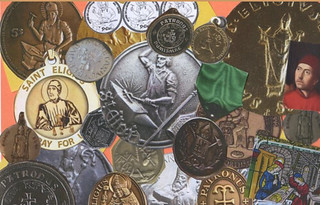
www.kste.ca

